Likes
- Proving to be very reliable despite being an unconventional package
- Is and will be a collectable car
- Such an enjoyable car to drive
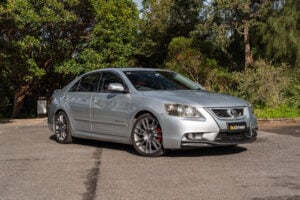
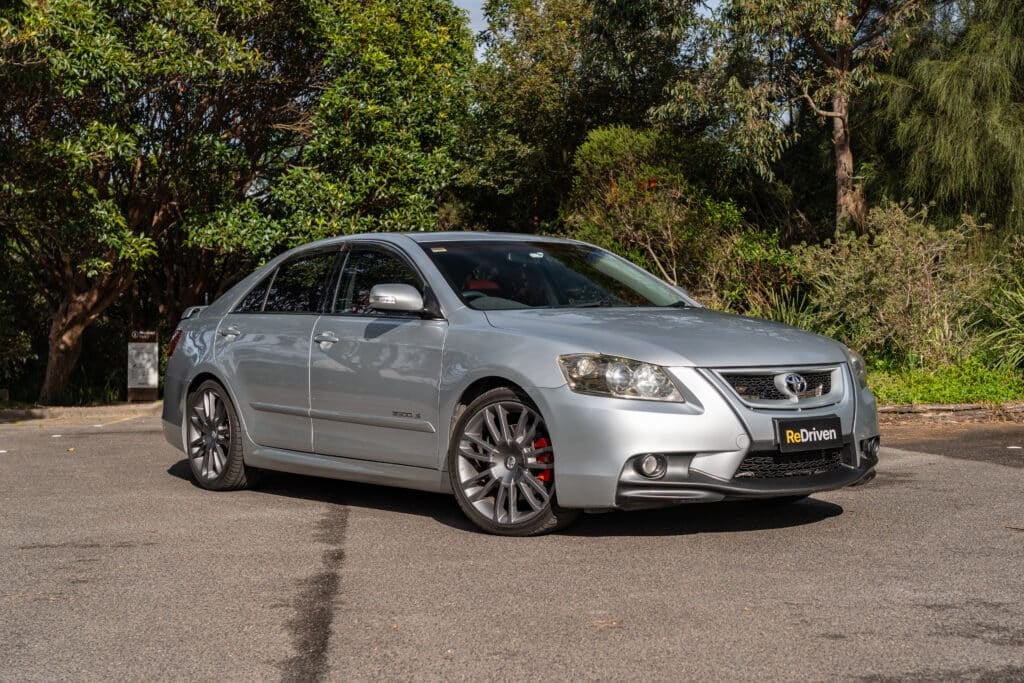
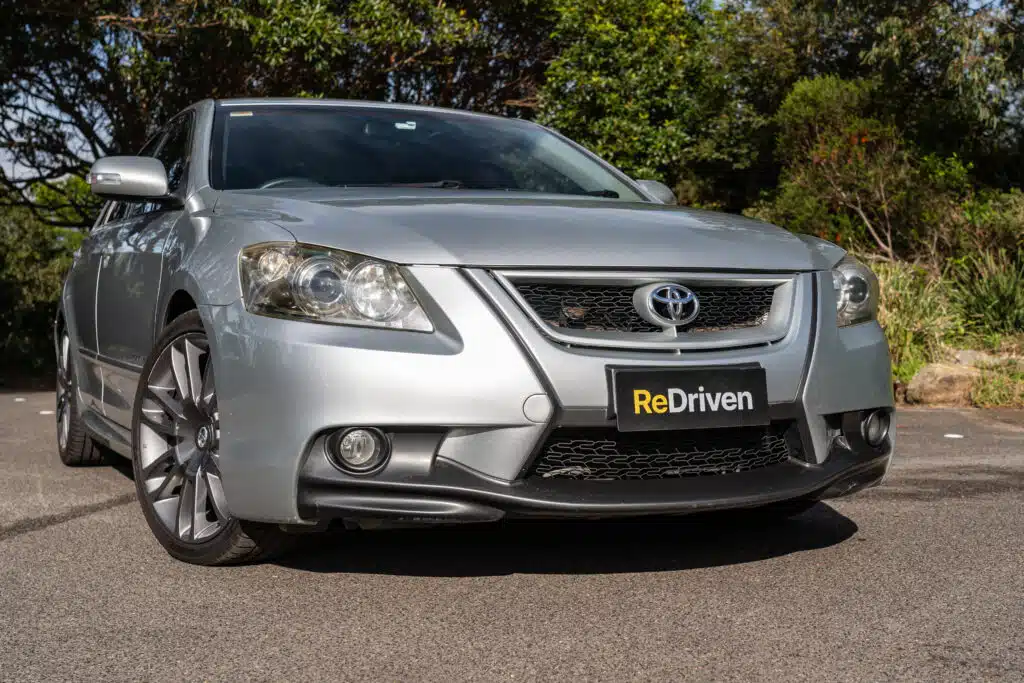
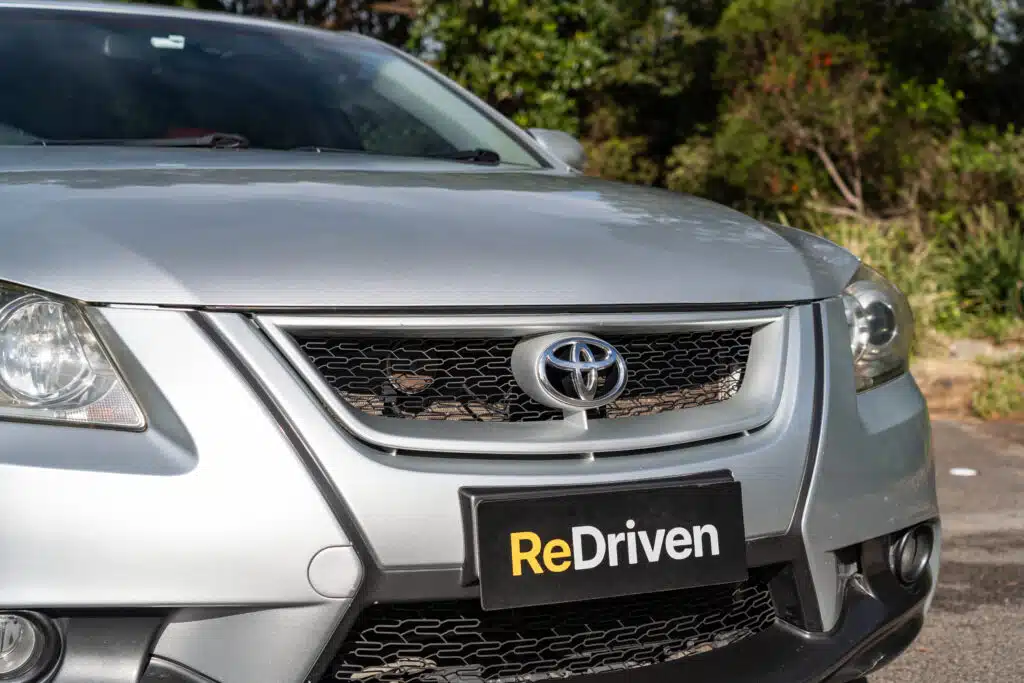
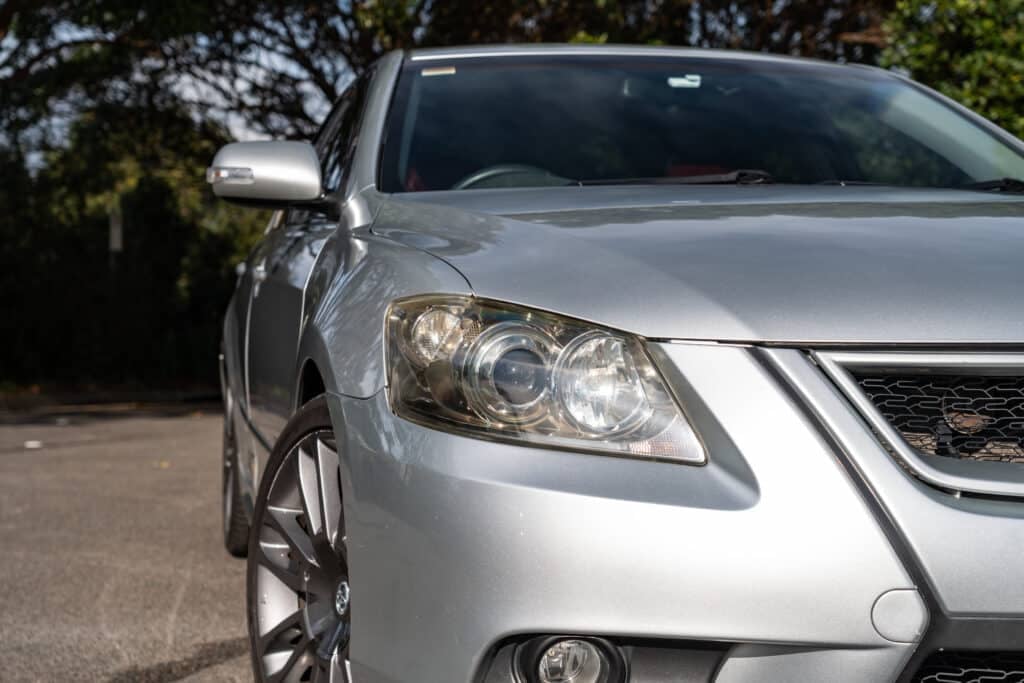

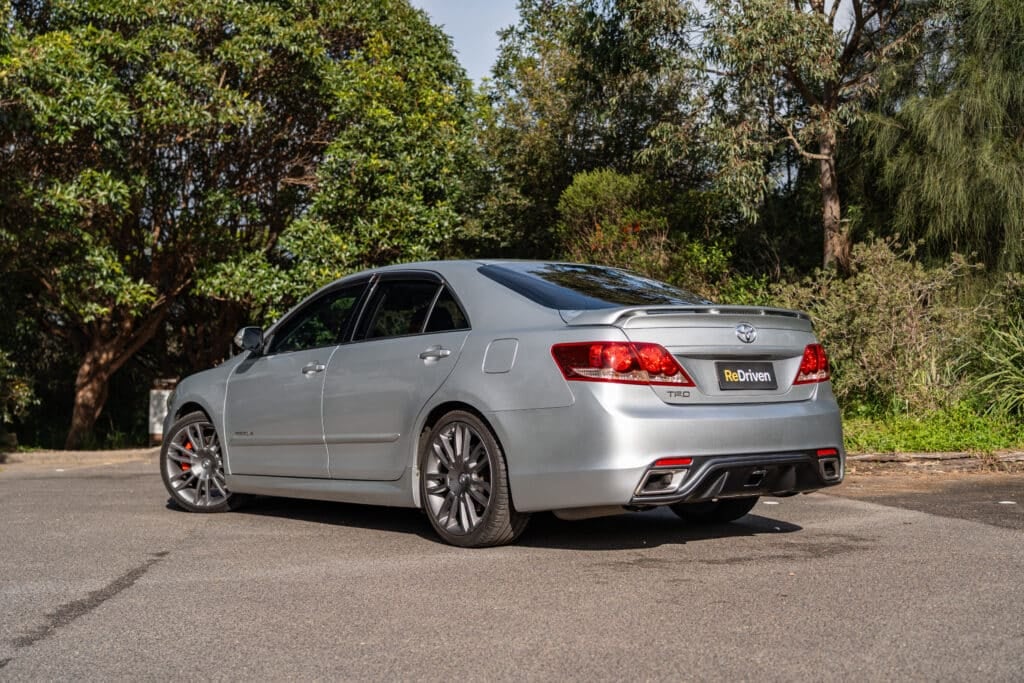
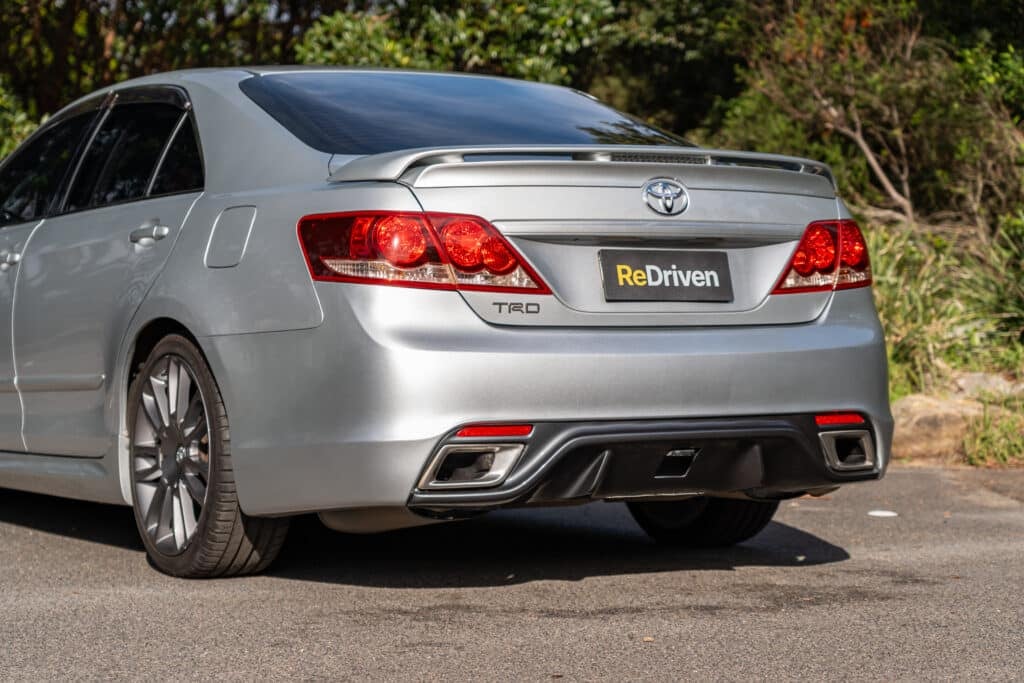

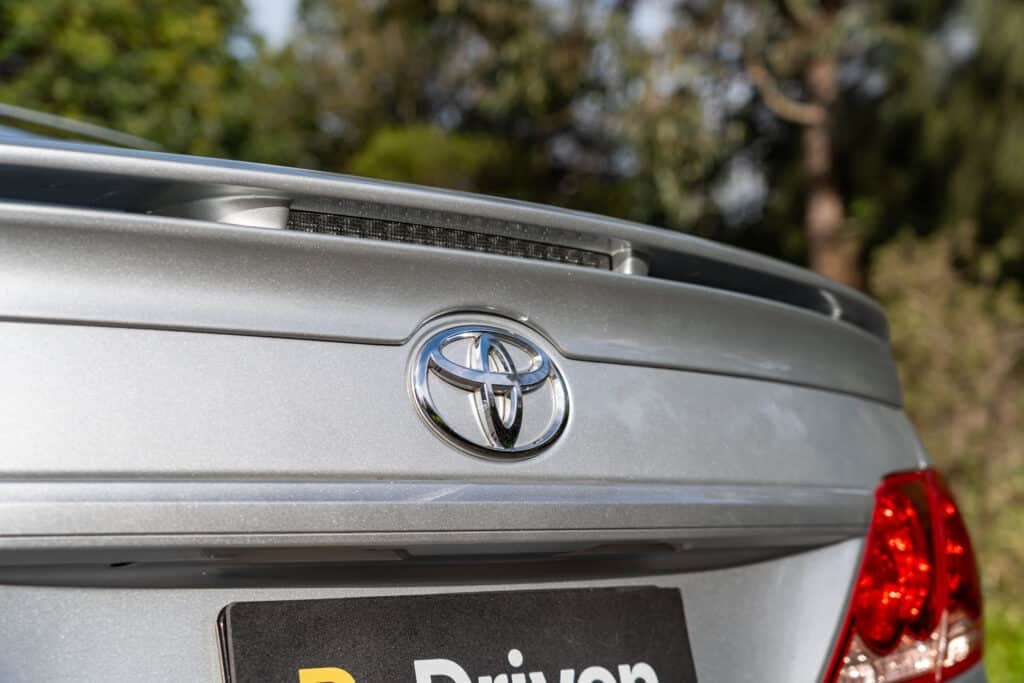
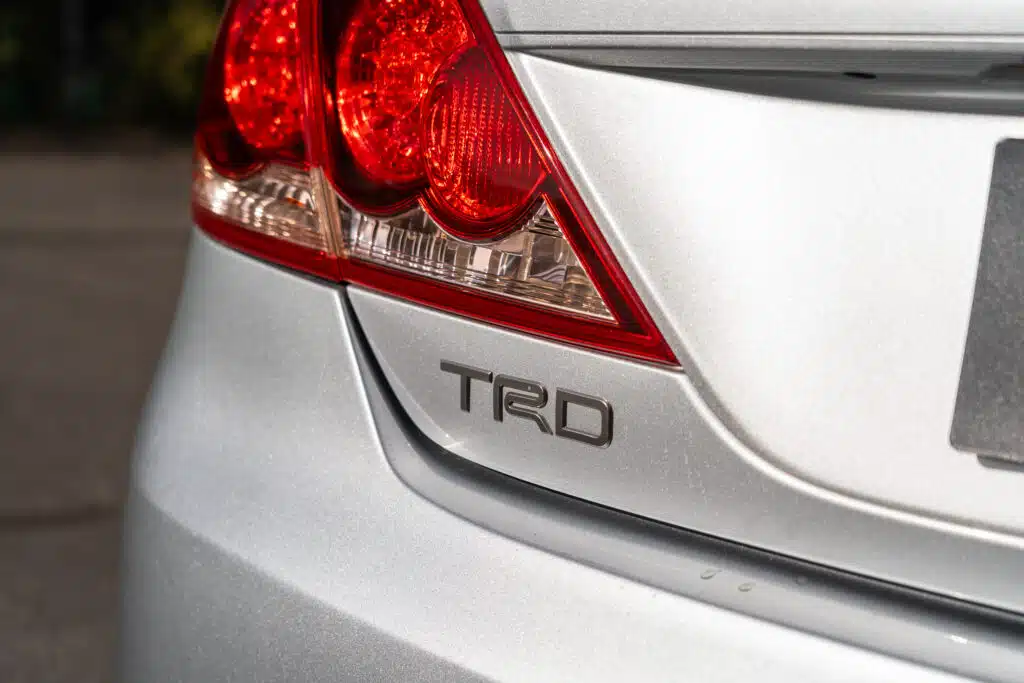
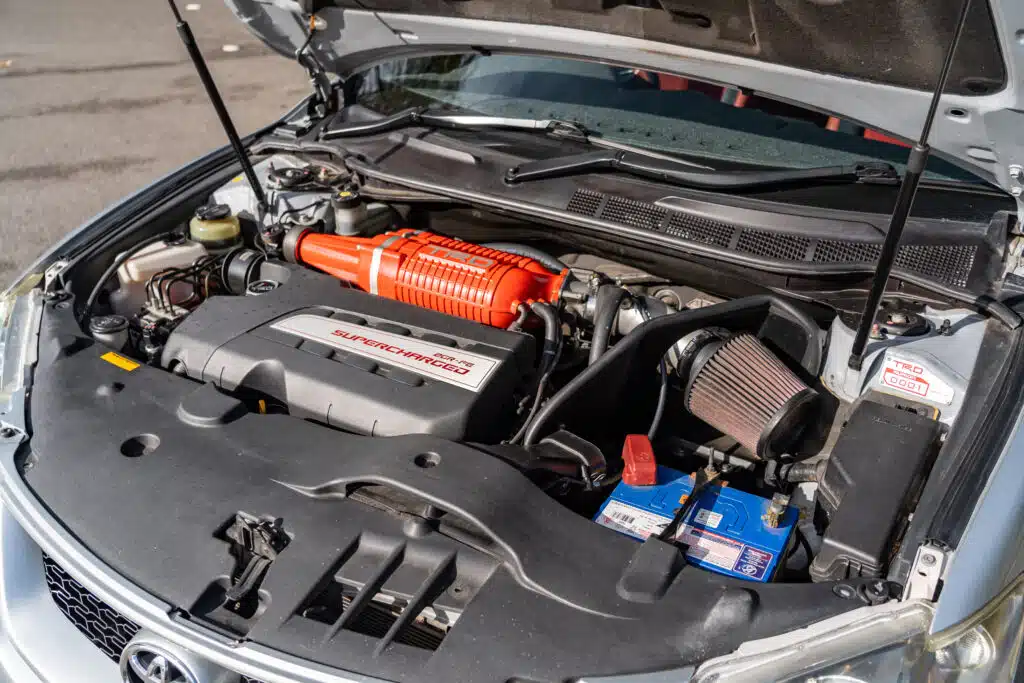
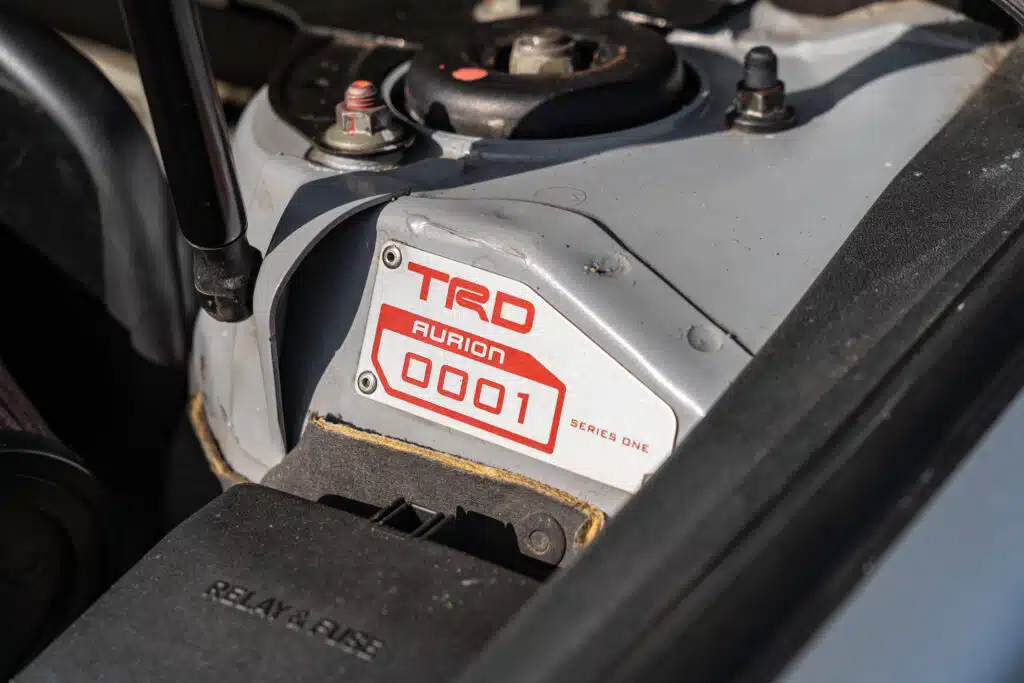
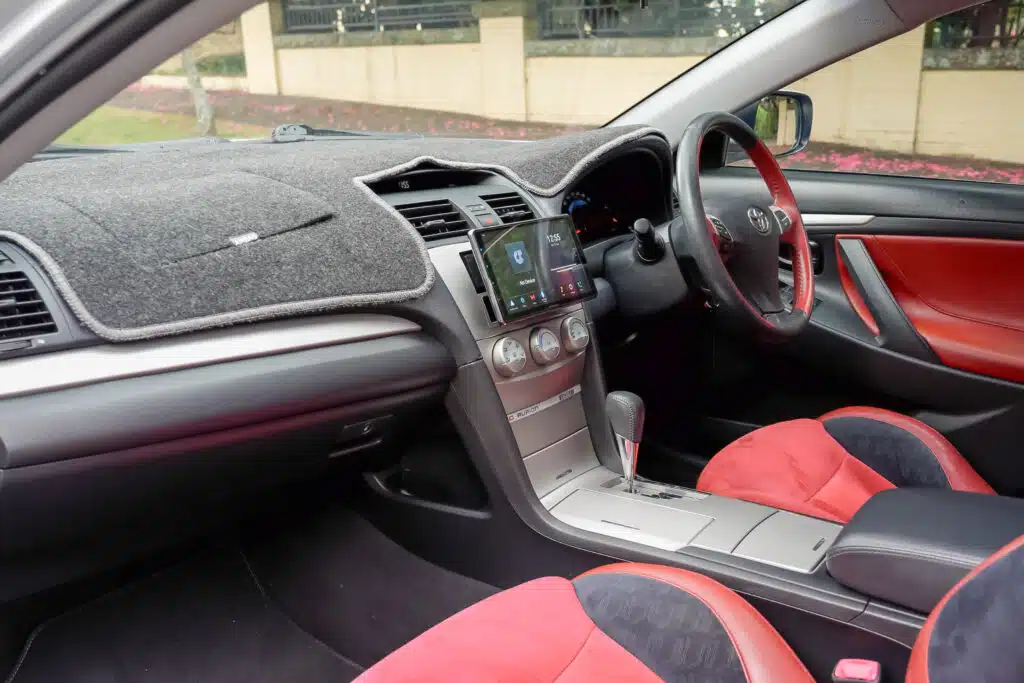
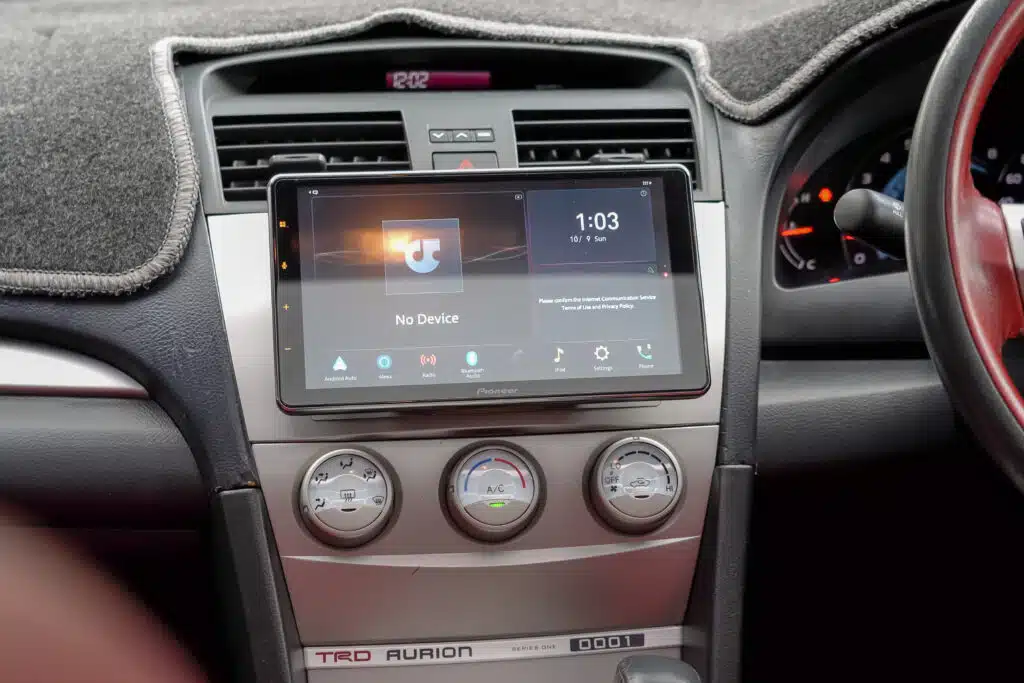
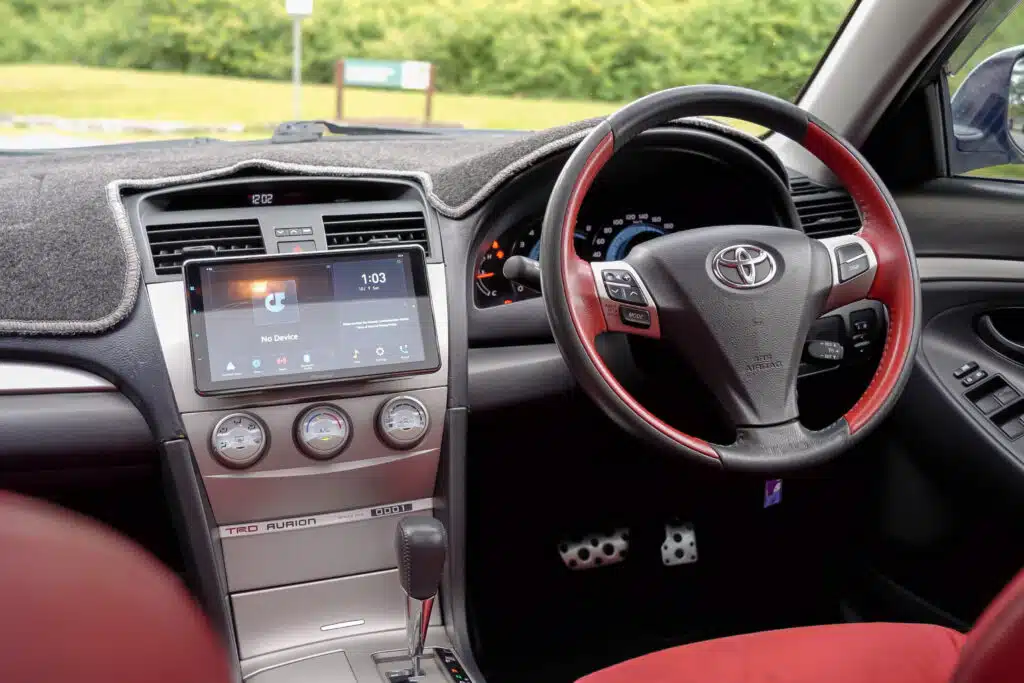
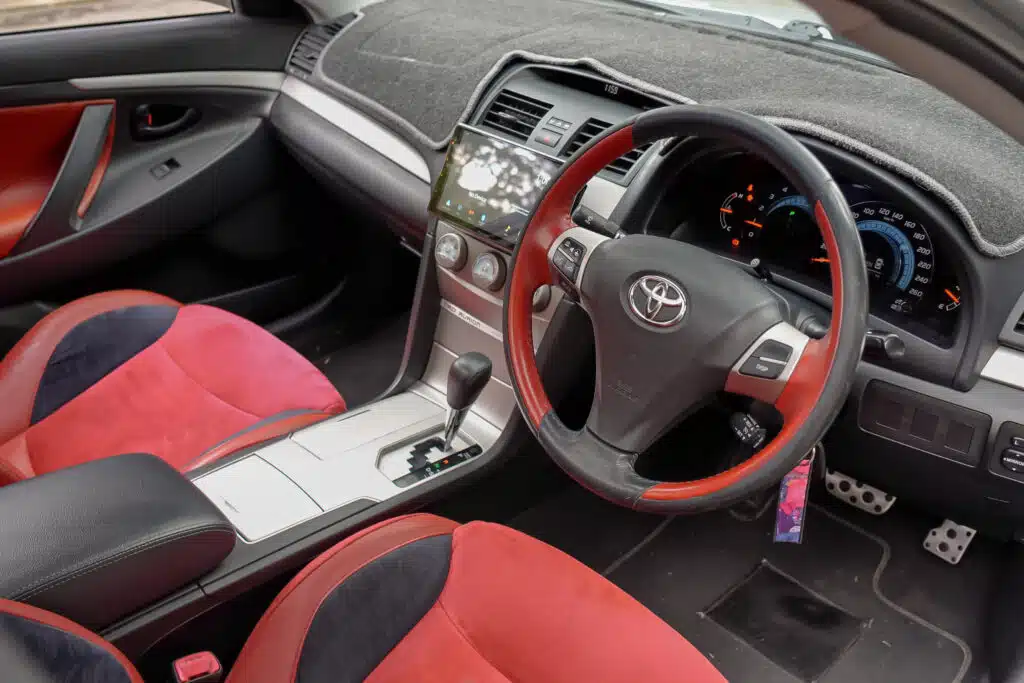
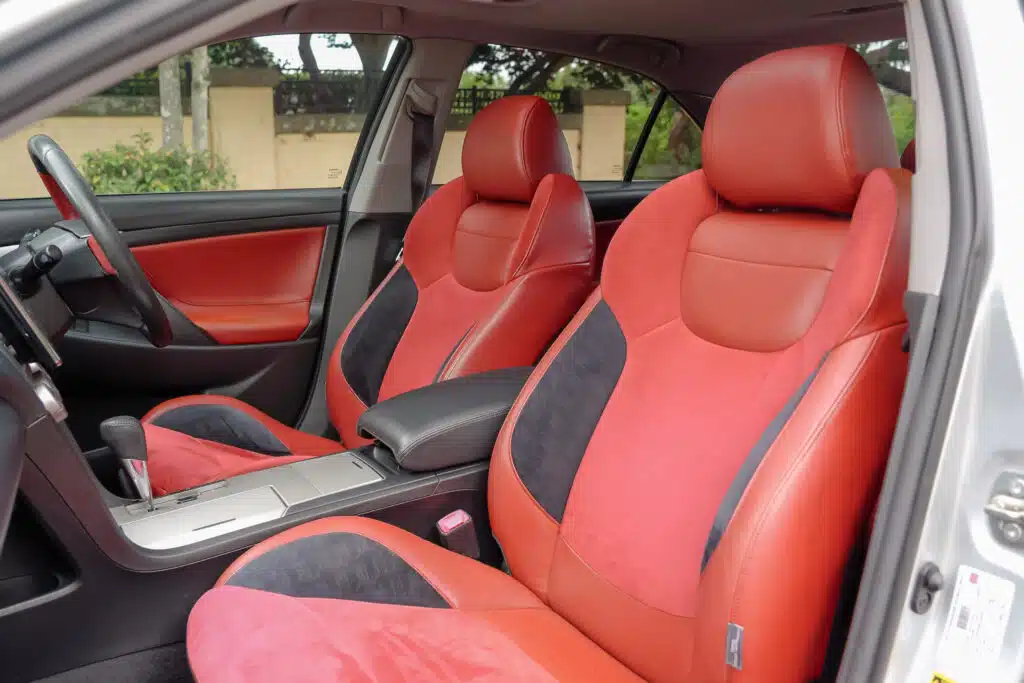
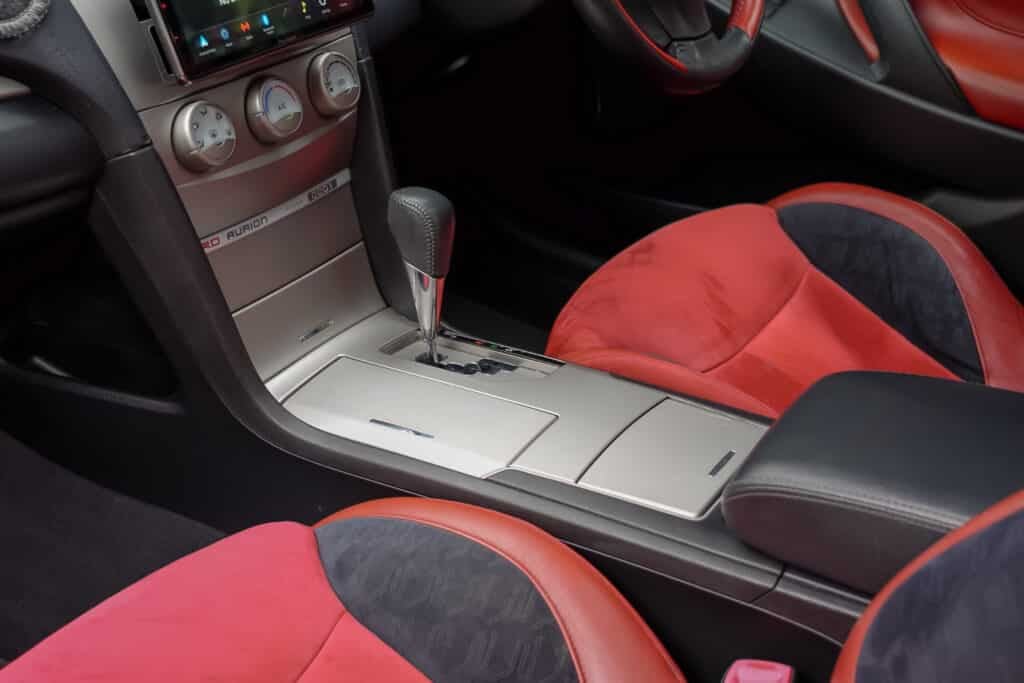
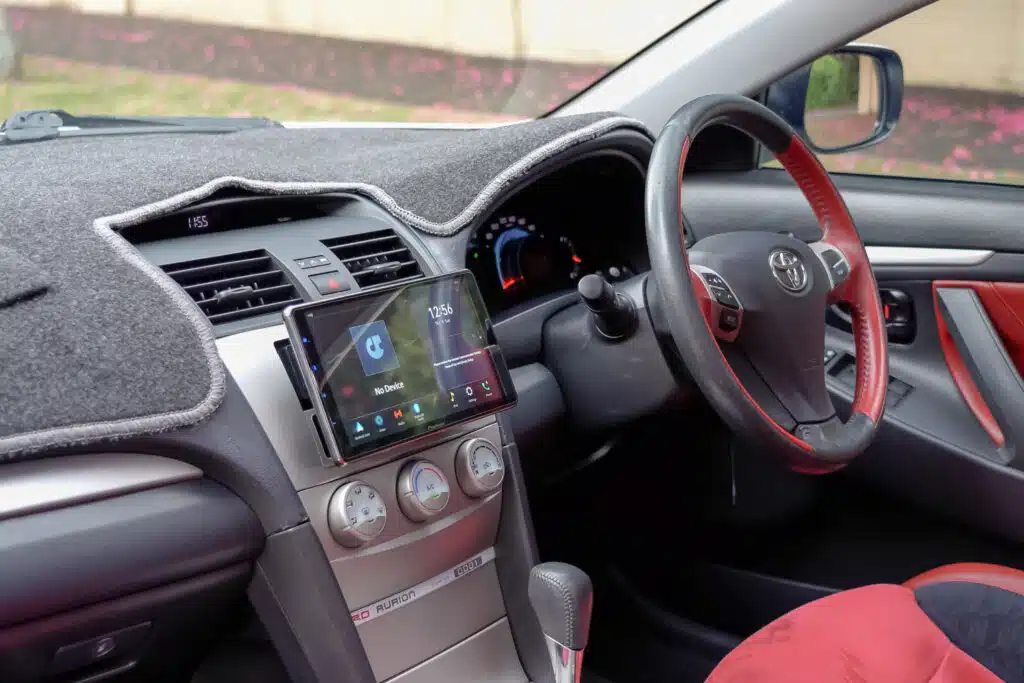
When you think “iconic Aussie car”, a front wheel drive Toyota might not spring to mind, but the Toyota Aurion, especially in TRD spec like this, totally deserves icon status, but that doesn’t mean you should buy one.
This platform is now pushing 20 years old, and while early lower-spec models can be had for very little on the used market, higher spec and mint condition examples, like the TRDs, are asking substantial money
Are they worth it, should you buy one? To answer this we really need to explore what’s going on here like what can go wrong with them.
We’ll get to that shortly, but just on the trim specs and what you might be buying, over the two iterations and in Toyota Aurion guise, you’ll have 6 flavours to choose from, in TRD form there have been two. The 3500S and the 3500SL.
The TRD isn’t just some sticker pack and a schmansy body kit, the serious stuff lies beneath the skin.
Like the rest of the Aurion range, power is sent to the front wheels from via a 3.5 litre V6 however, Toyota Racing Development turned up the wick, bolting on an Eaton supercharger. This resulted in a car that Toyota claimed at the time to be the most powerful front-wheel drive car in the world.
But it wasn’t just a stonking great powerplant, pretty much everything was modified and calibrated to suit. The brakes and suspension were upgraded, the interior trim matched the more aggressive exterior treatment, even small details like the rear bumper structure being strengthened by using extruded aluminium to help stiffen the chassis were implemented. best of all, this was done here in Australia, and loads of the components used were from Australian suppliers too.
And remember, the Aurion was made in Australia, for Australian conditions, then exported to South East Asia and the Middle East. The Aurion is an Aussie made car we should be bloody proud of.
But how much should be paying for such an icon? Well for a TRD like this, pricing can vary from $10,000 to $30,000, depending on not only condition of the car but maybe how enthusiastic the market is at the time. Seriously, there are very few cars that fluctuate in price like these can, if you can find a used example because they rarely pop up for sale.
For the regular Aurion range, pricing can kick off from as little as a couple of cases of beer, or for something that actually works and is registered, more like $3000 and the market tops out around $16,000.
And similar can be said for other locally-delivered 6-cylinder family cars, the likes of the Holden VE Commodore, Ford FG Falcon and Mitsubishi 380 cannot match the Aurion in regards to power to weight ratio, and thanks to Australia’s love affair with rear-wheel-drive family cars, generally speaking a Commodore or Falcon will ask noticeably more than equivalent kilometres and condition Aurion.
About the only other car that comes close to offering the sort of power, fit and finish and value for money to the Aurion, is the V6 Honda Accord of this era.
Then when it comes to alternatives to the TRD, yes a host of serious metal from Ford and Holden will dominate the spicy Toyota in terms of power to weight and acceleration times, but for what a TRD will be asking, the others will be showing substantially more kilometres and most likely be in noticeably worse condition.
This alludes to what might be one of the advantages of the TRD Aurion over the other performance-focused large taxis, because Holden and Ford tend to be the “go-to” cars for those wanting to express themselves via burnouts and anti-social driving behaviour, it seems the majority of these have avoided being ruined by dickheads.
Plus, these sold in far fewer numbers which makes it more exclusive than the Falcodores and it still looks the absolute business.
Plus, there’s something incredibly special about our test car, a total of 537 TRD Aurion were made, and our car is number 1! Ours was the first, that’s bloody amazing!!
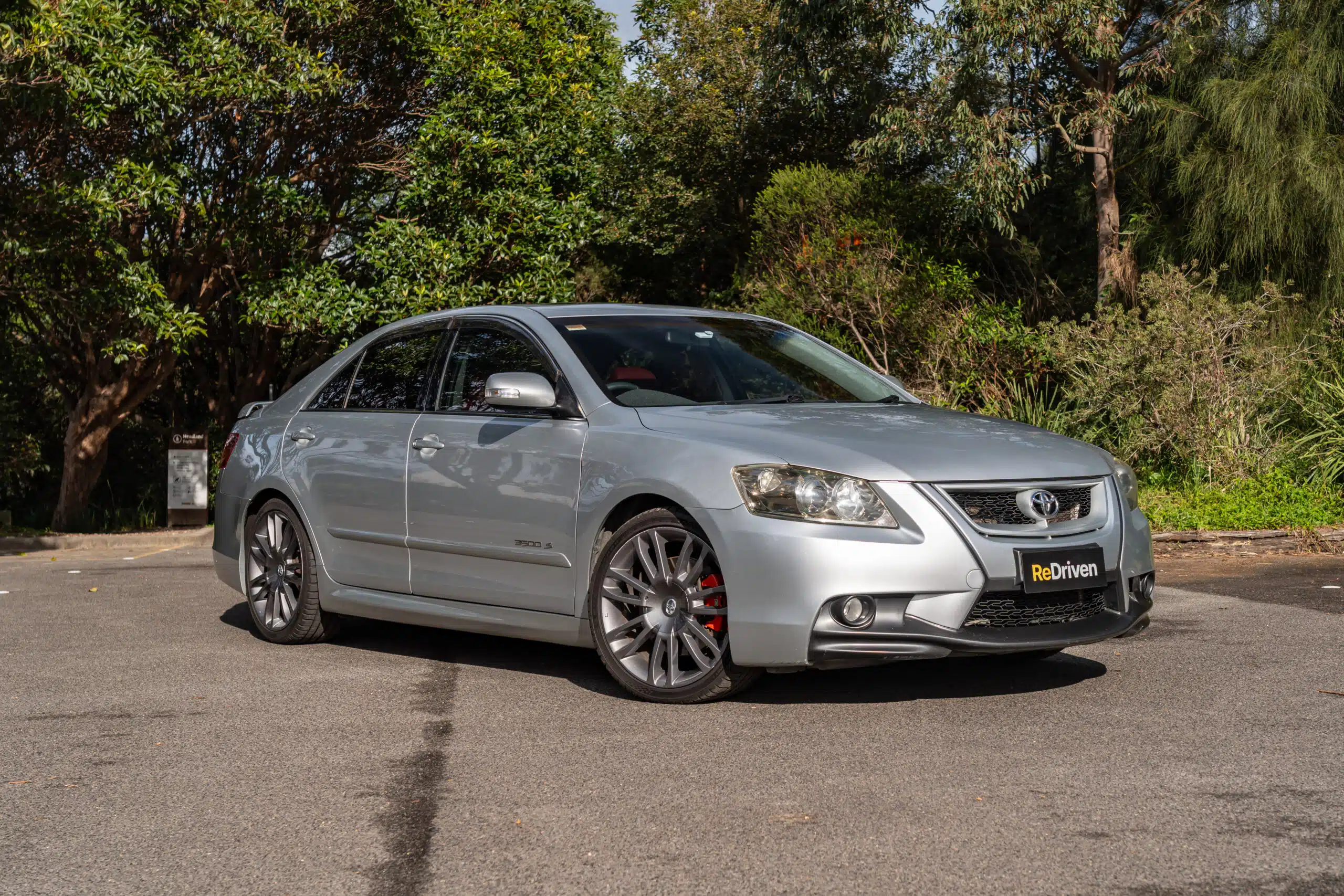
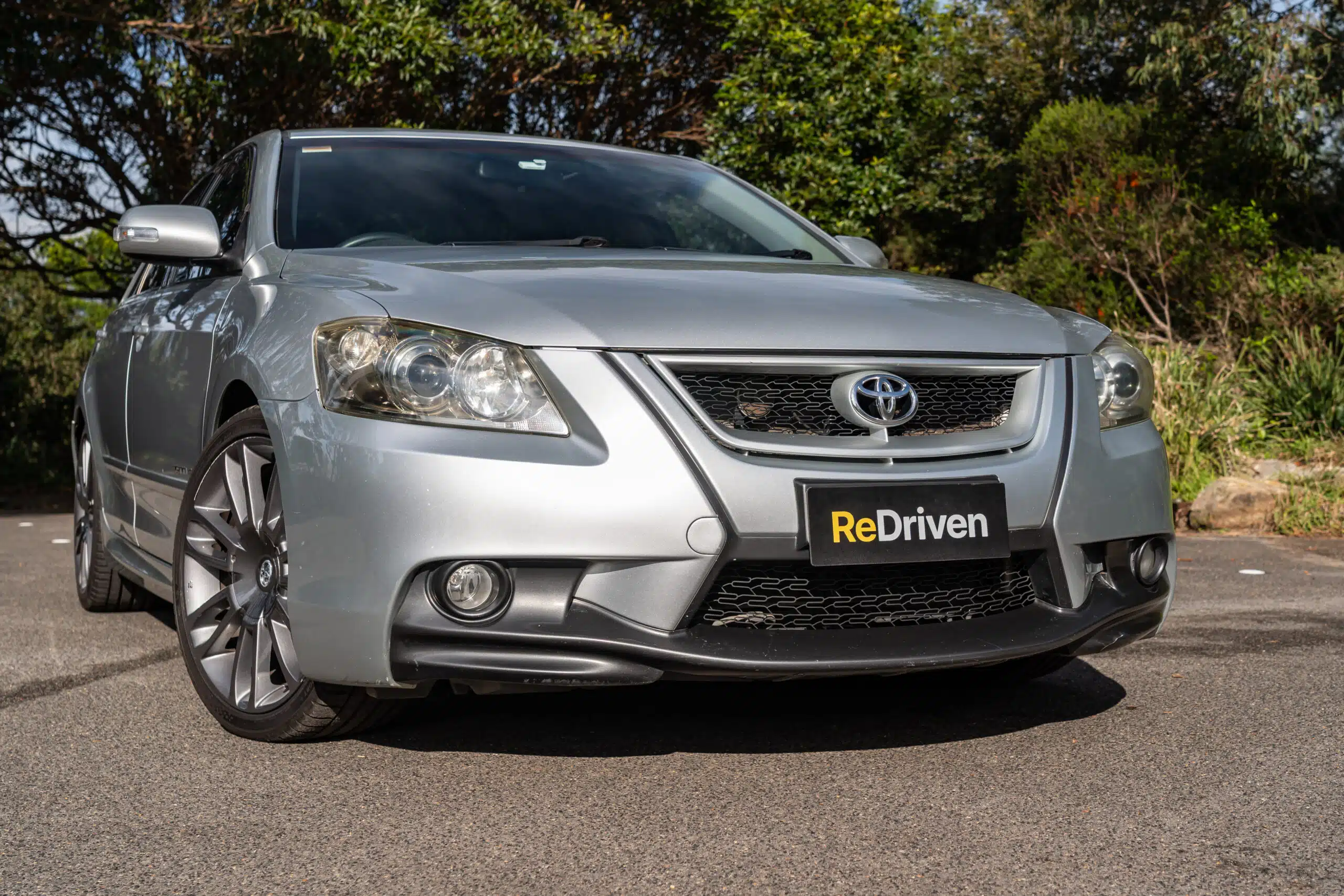
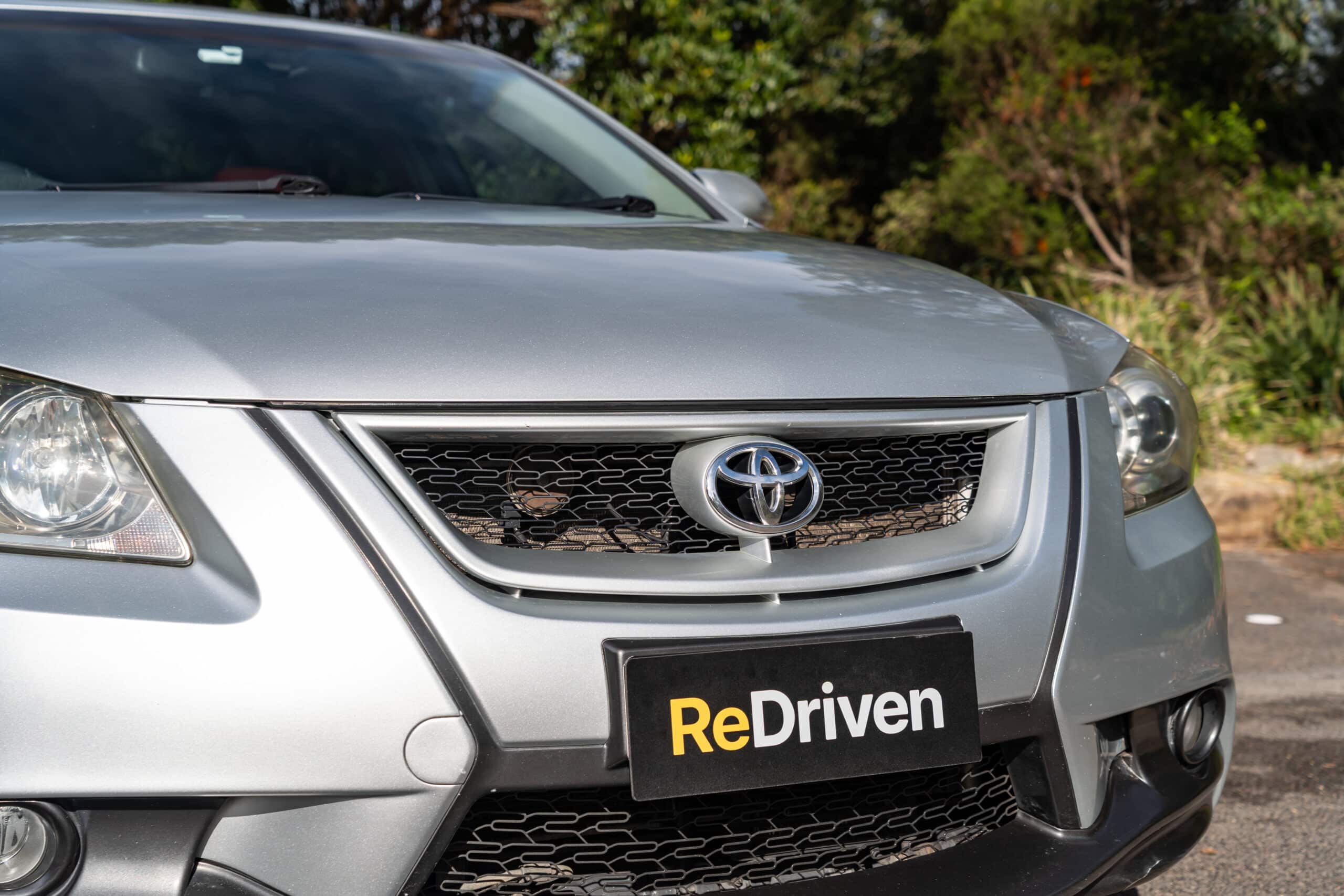
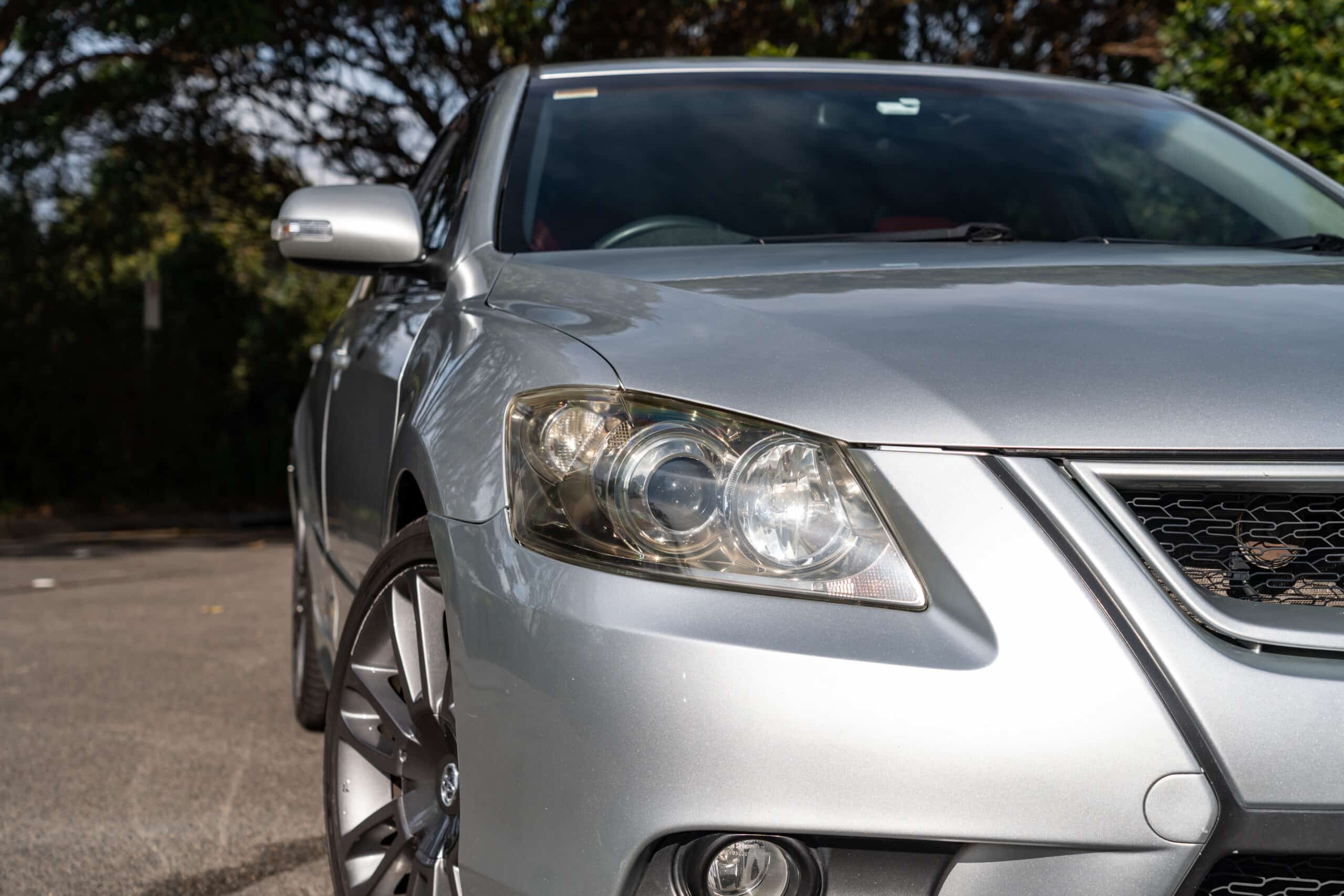
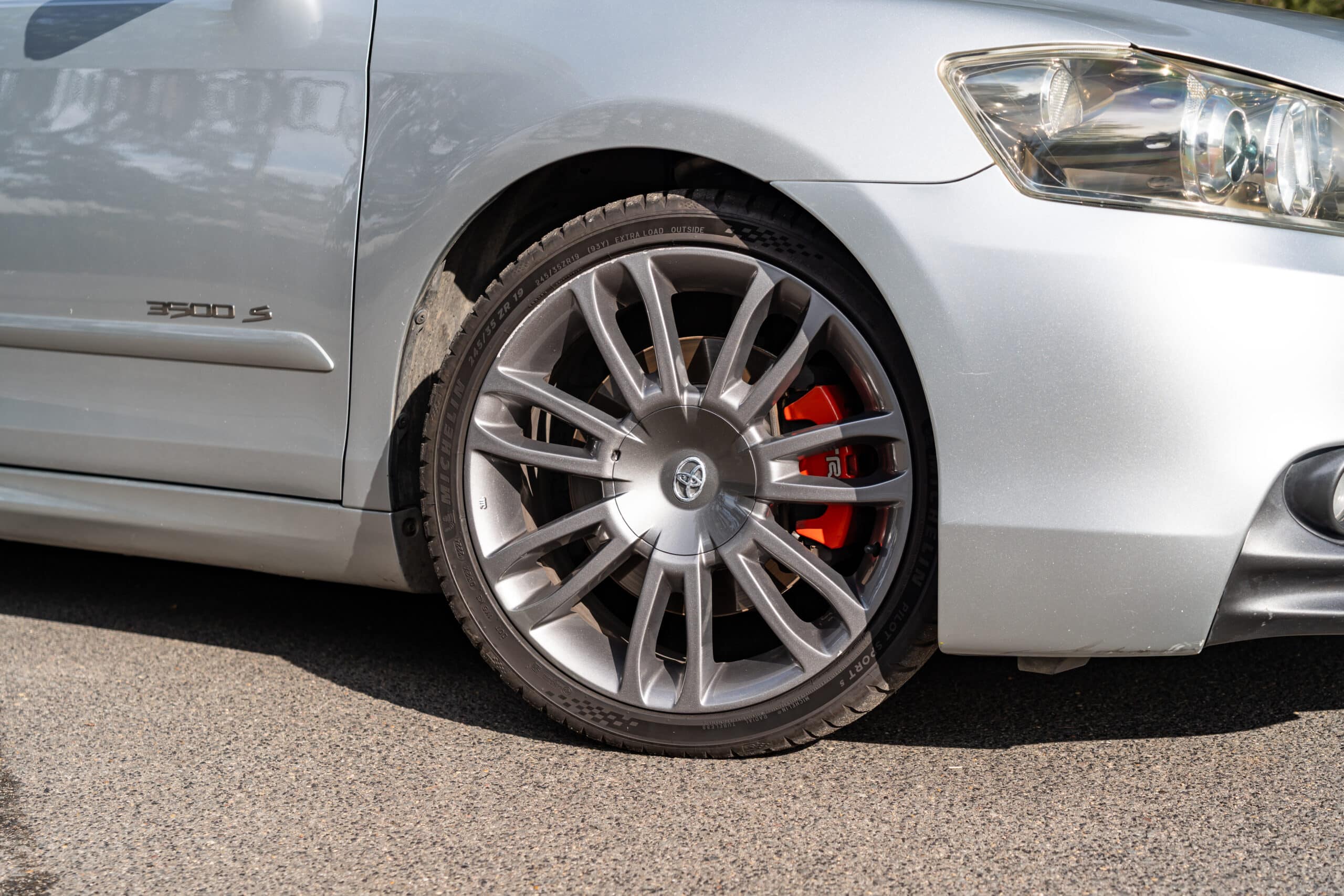
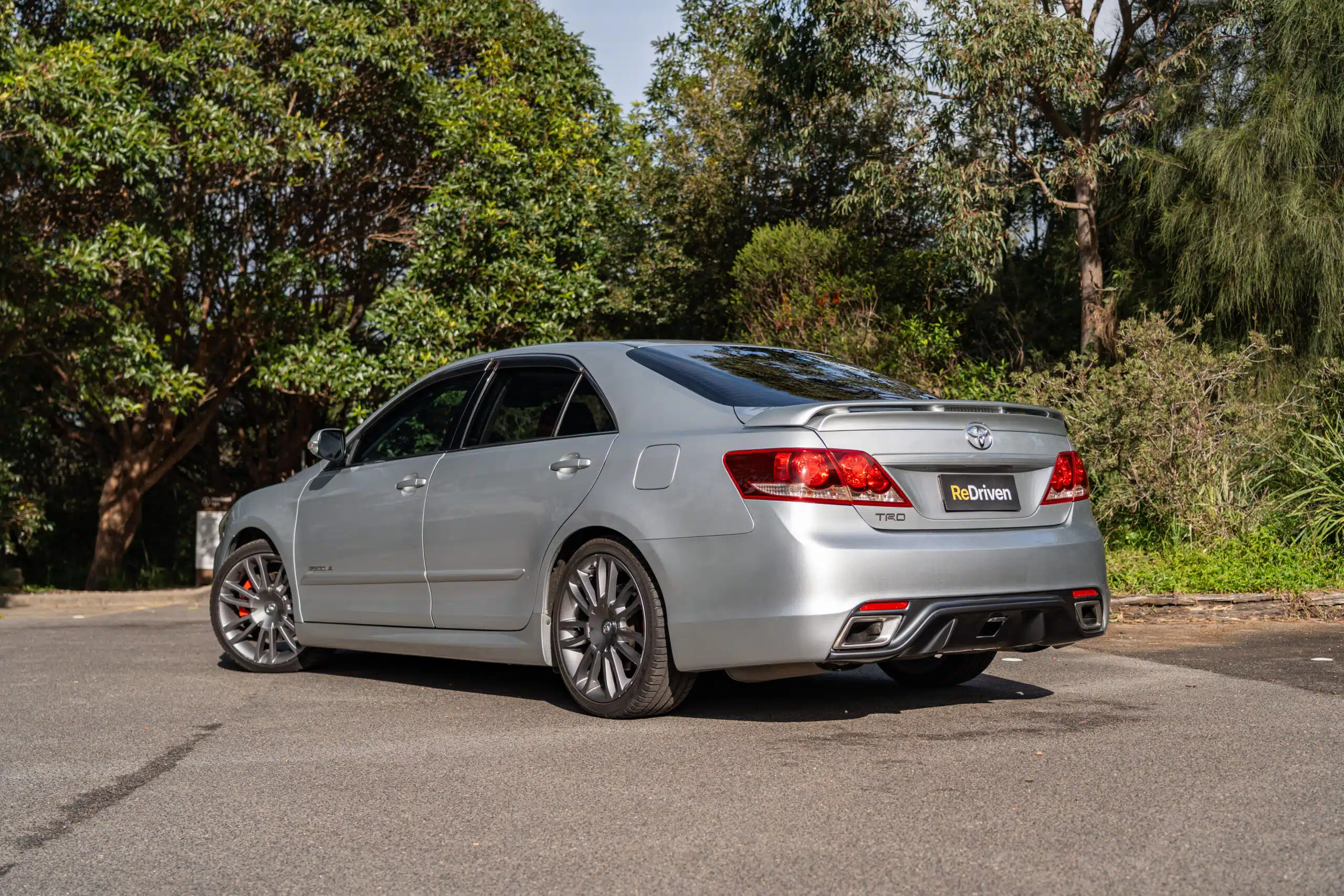
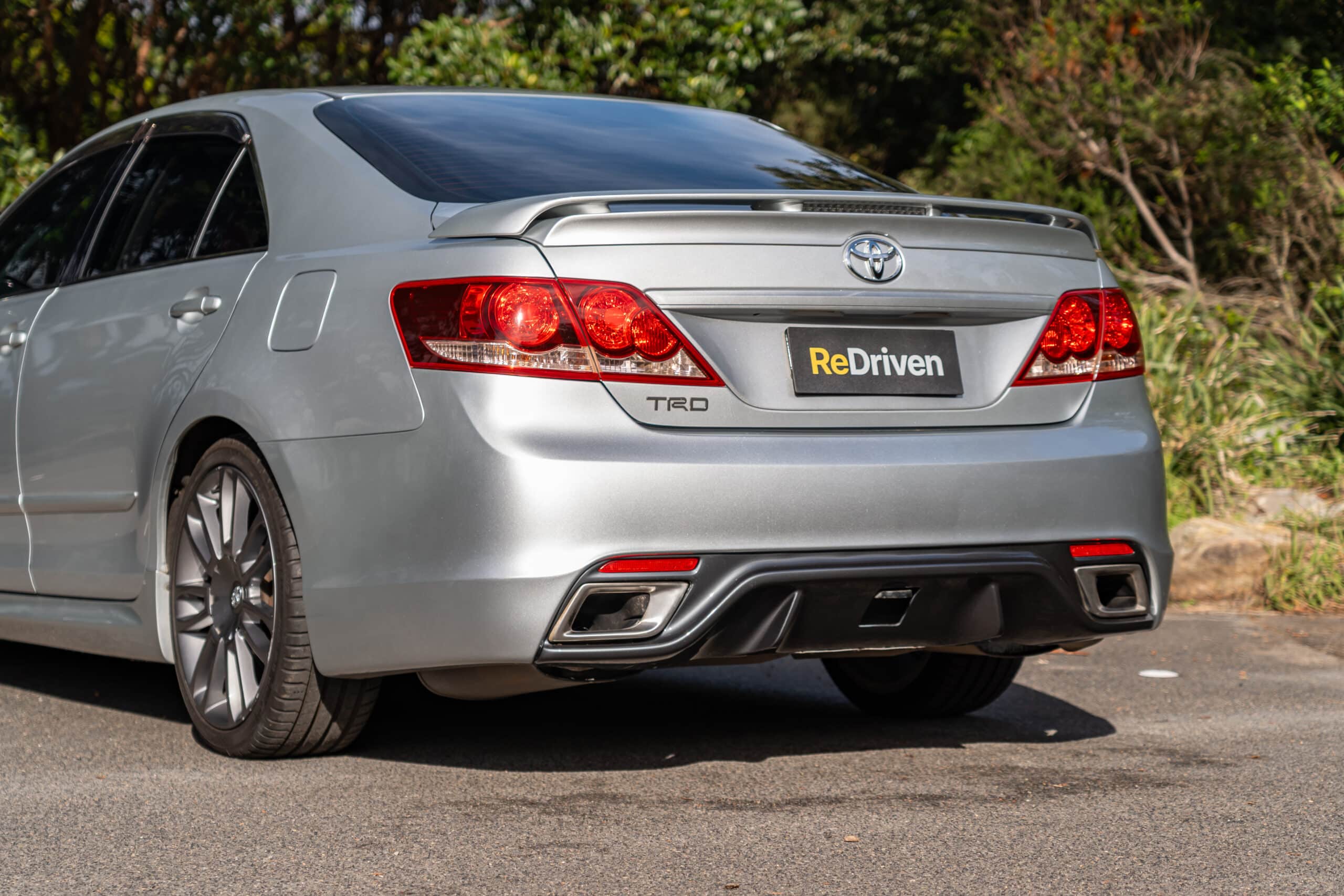
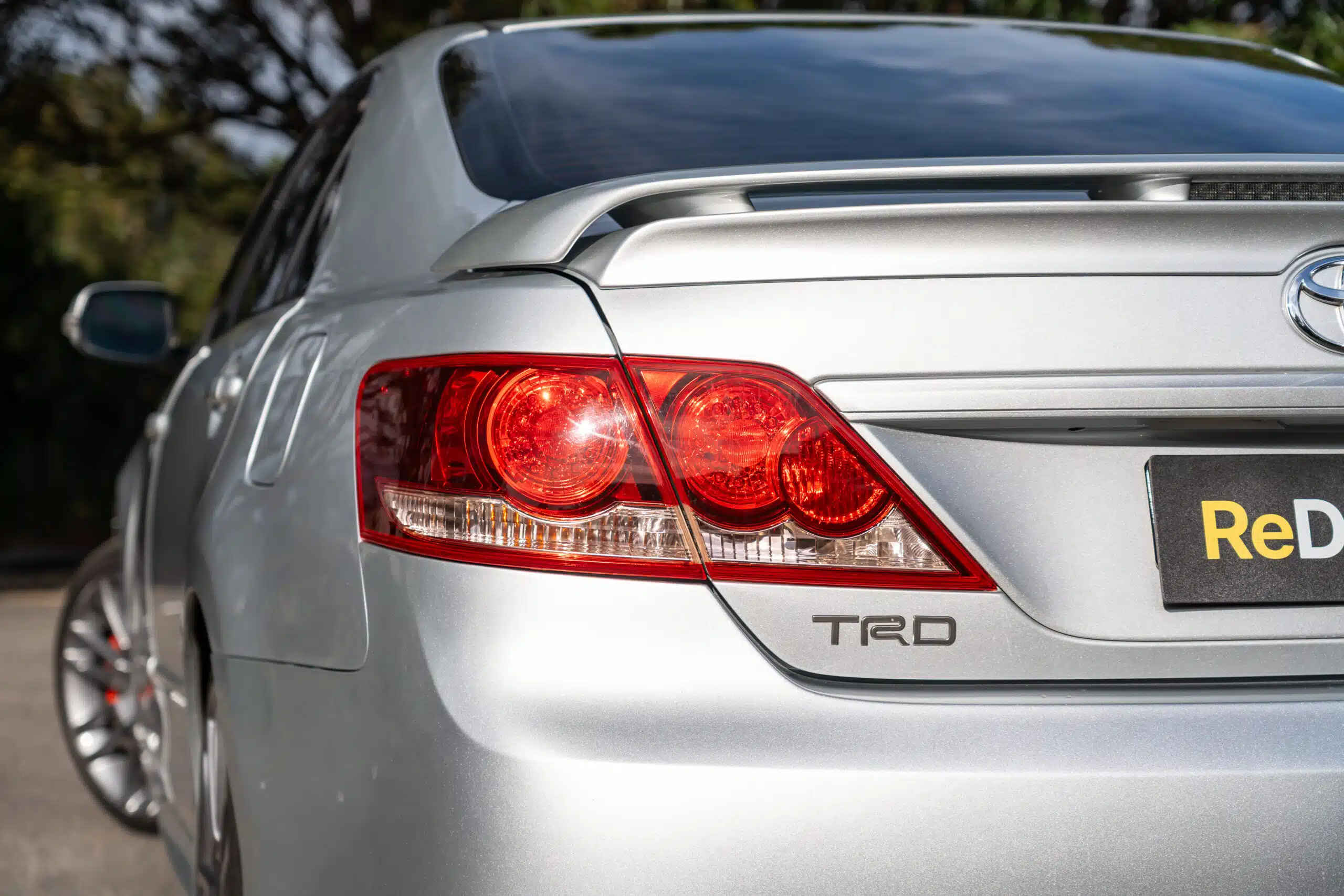
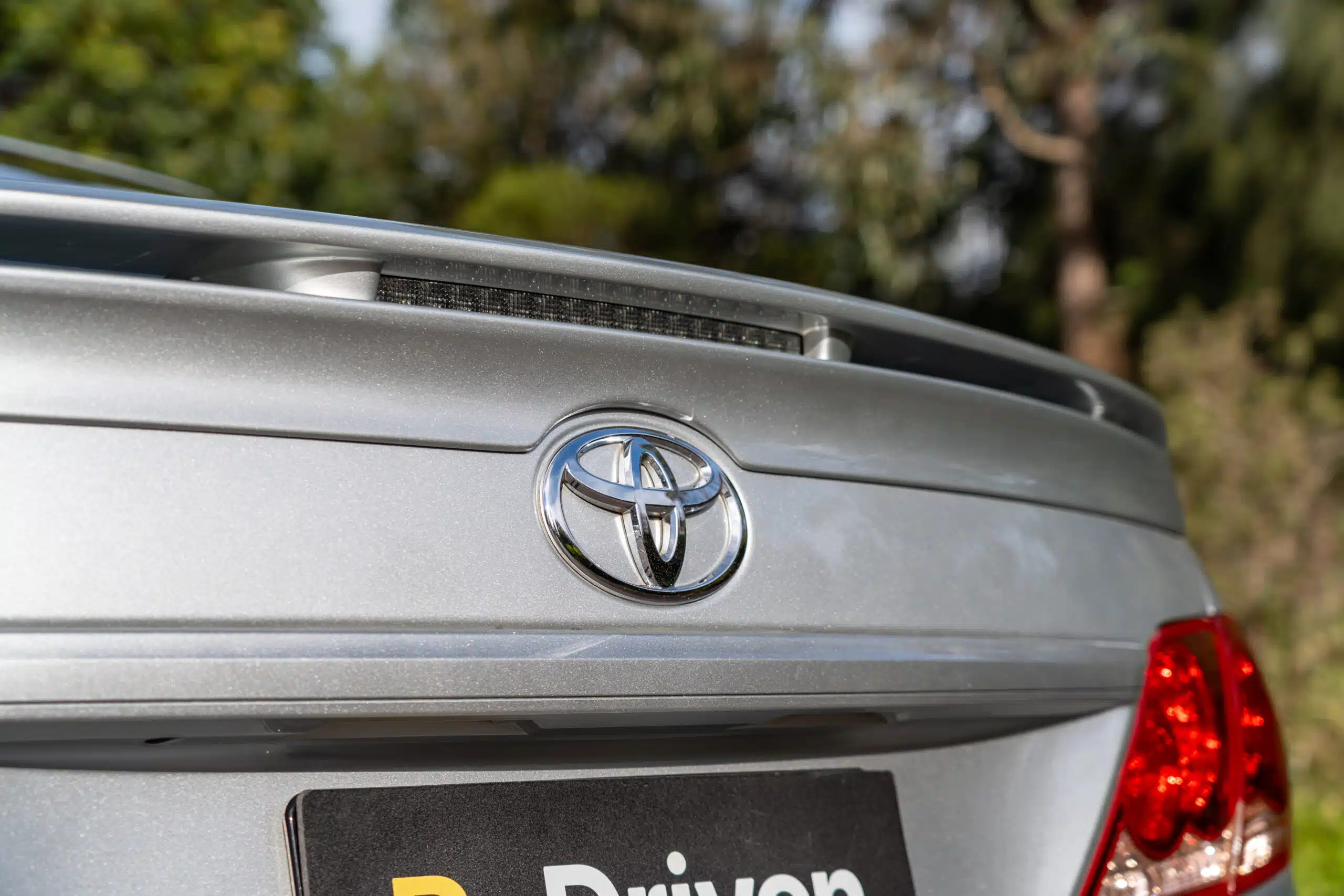
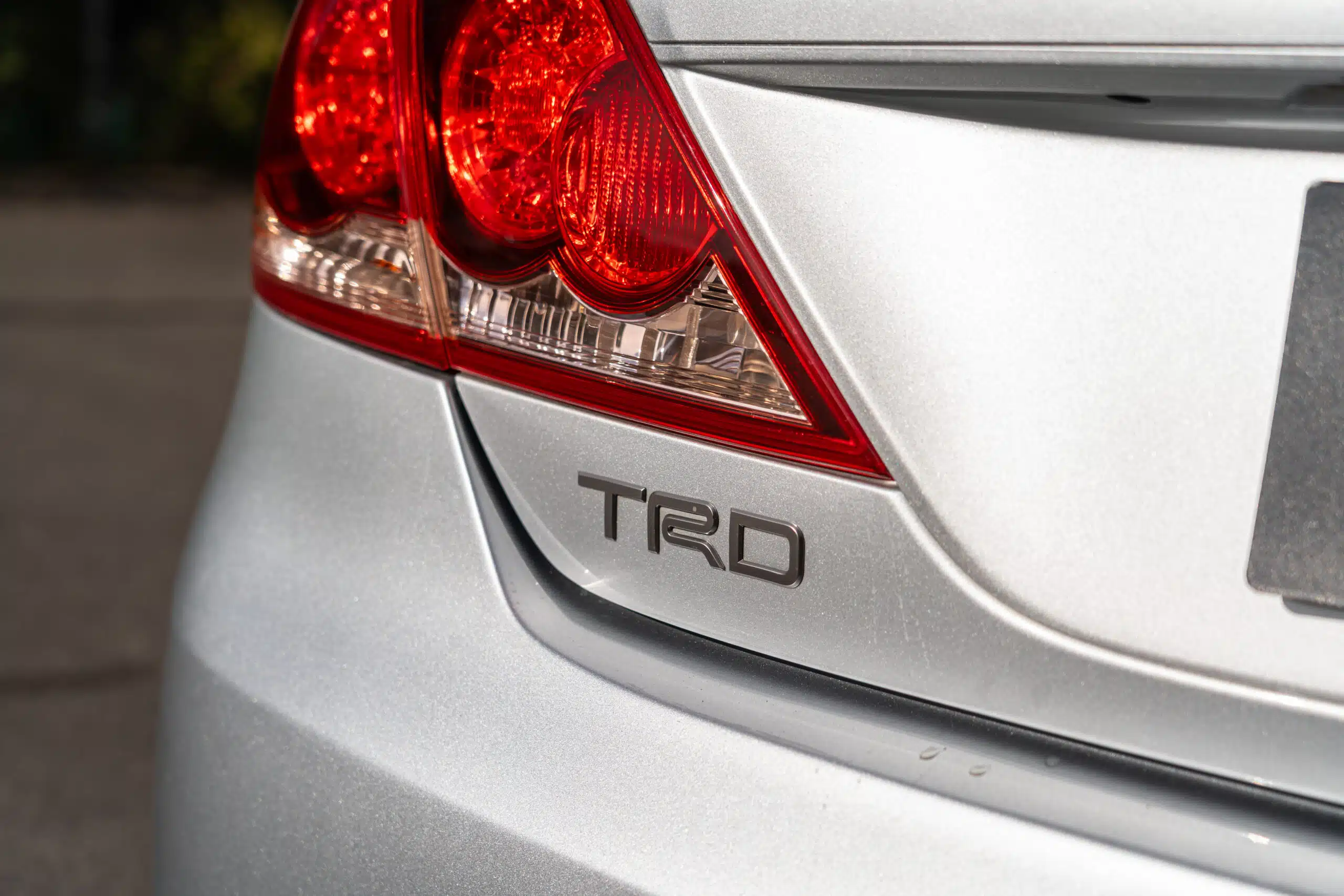
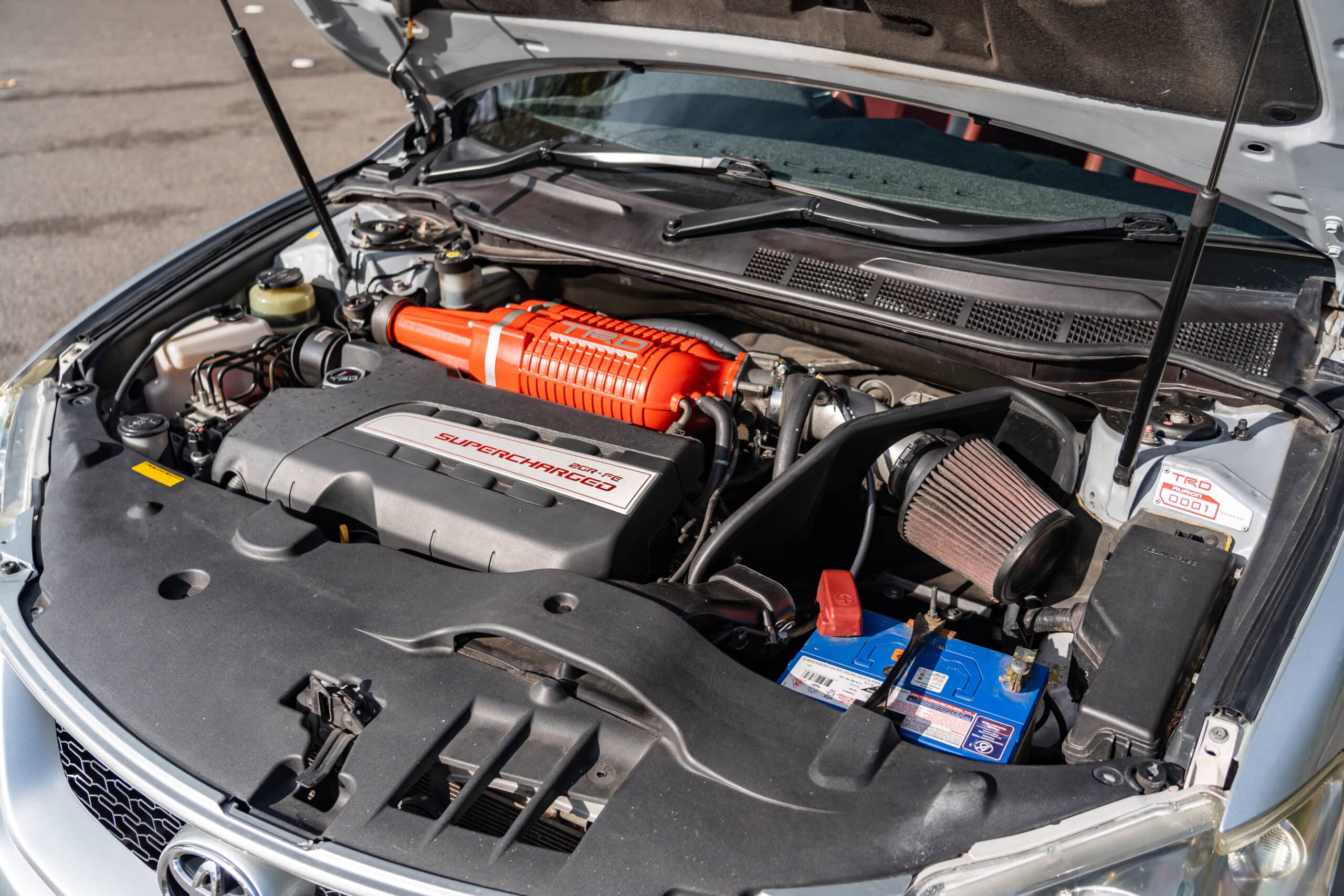
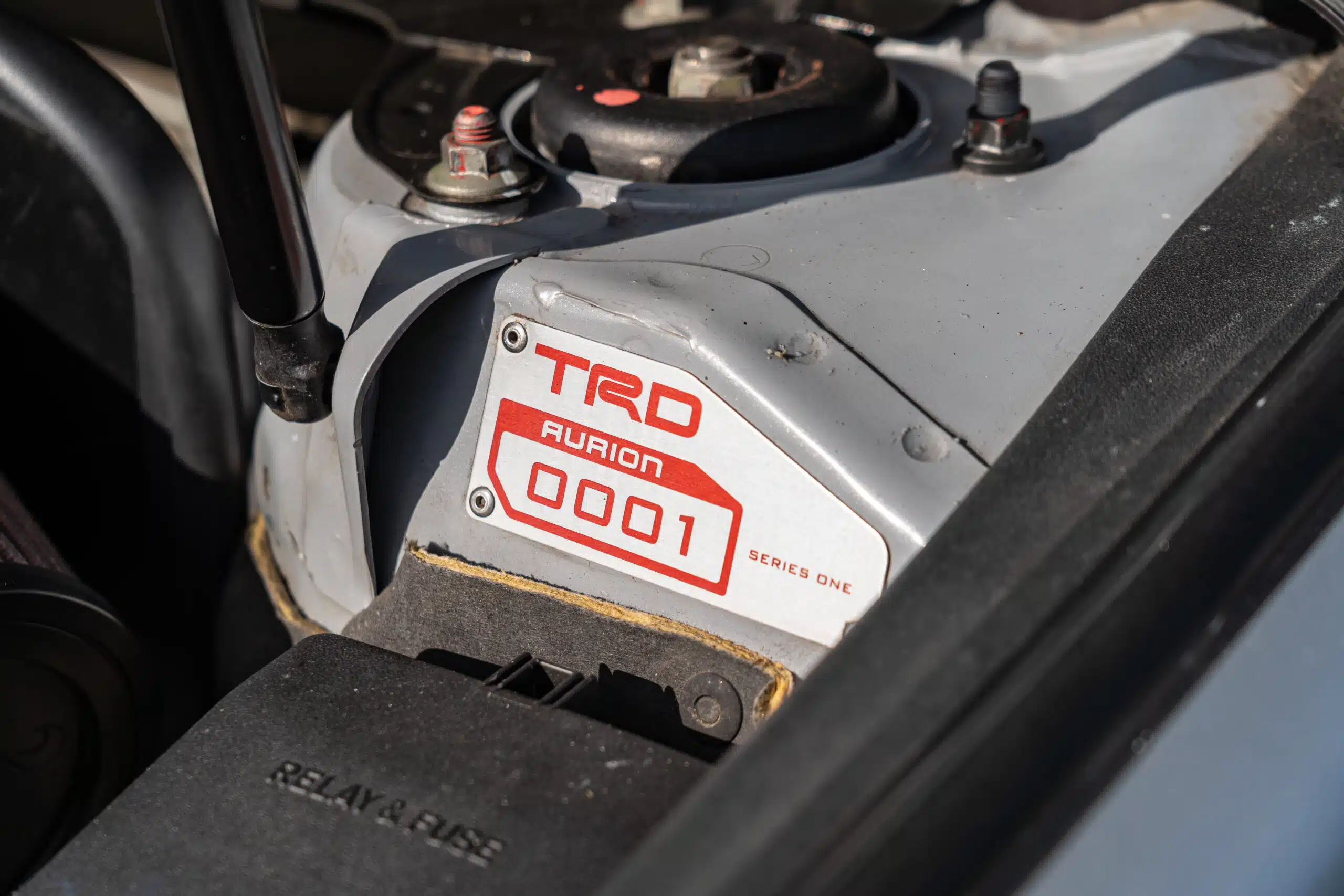
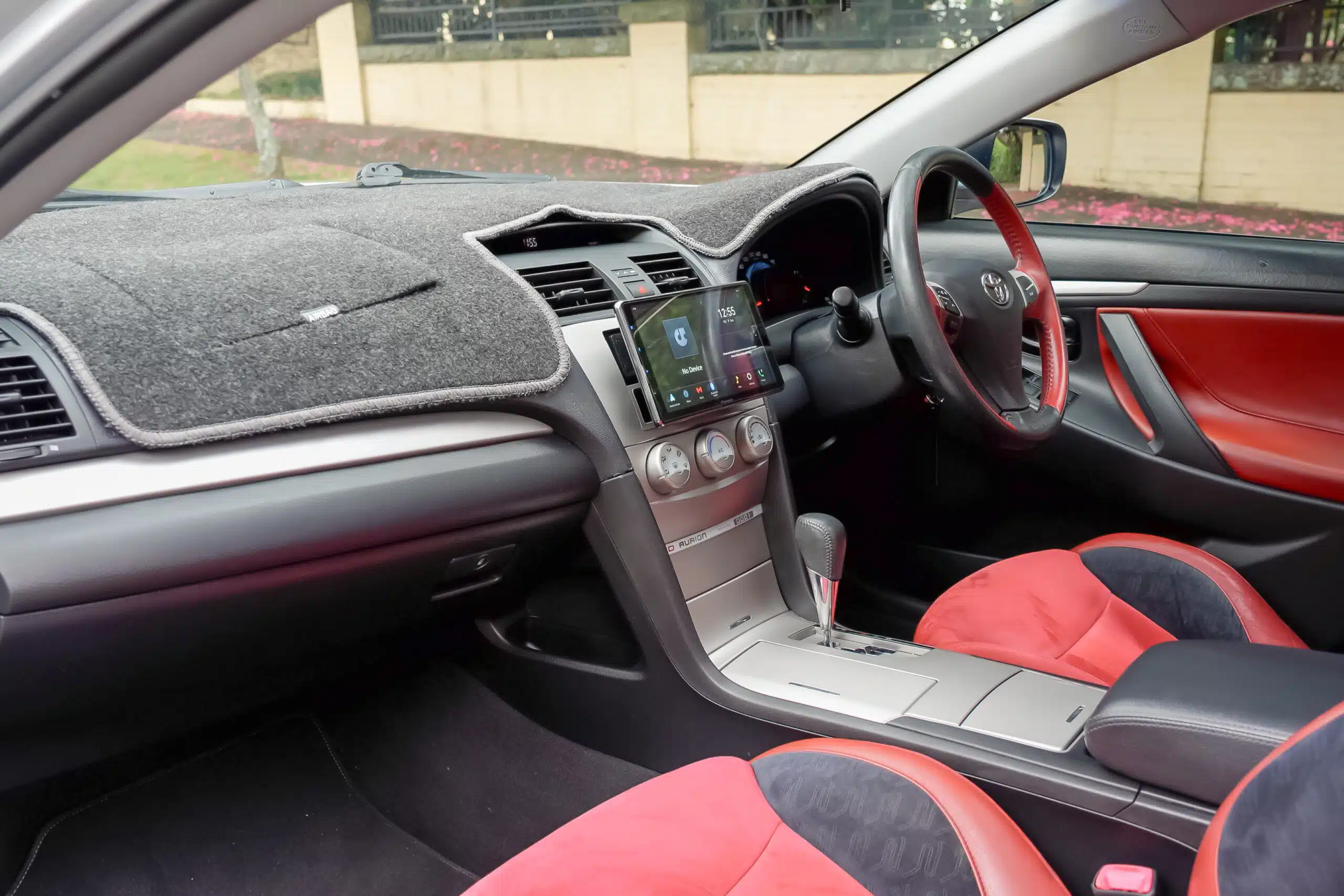
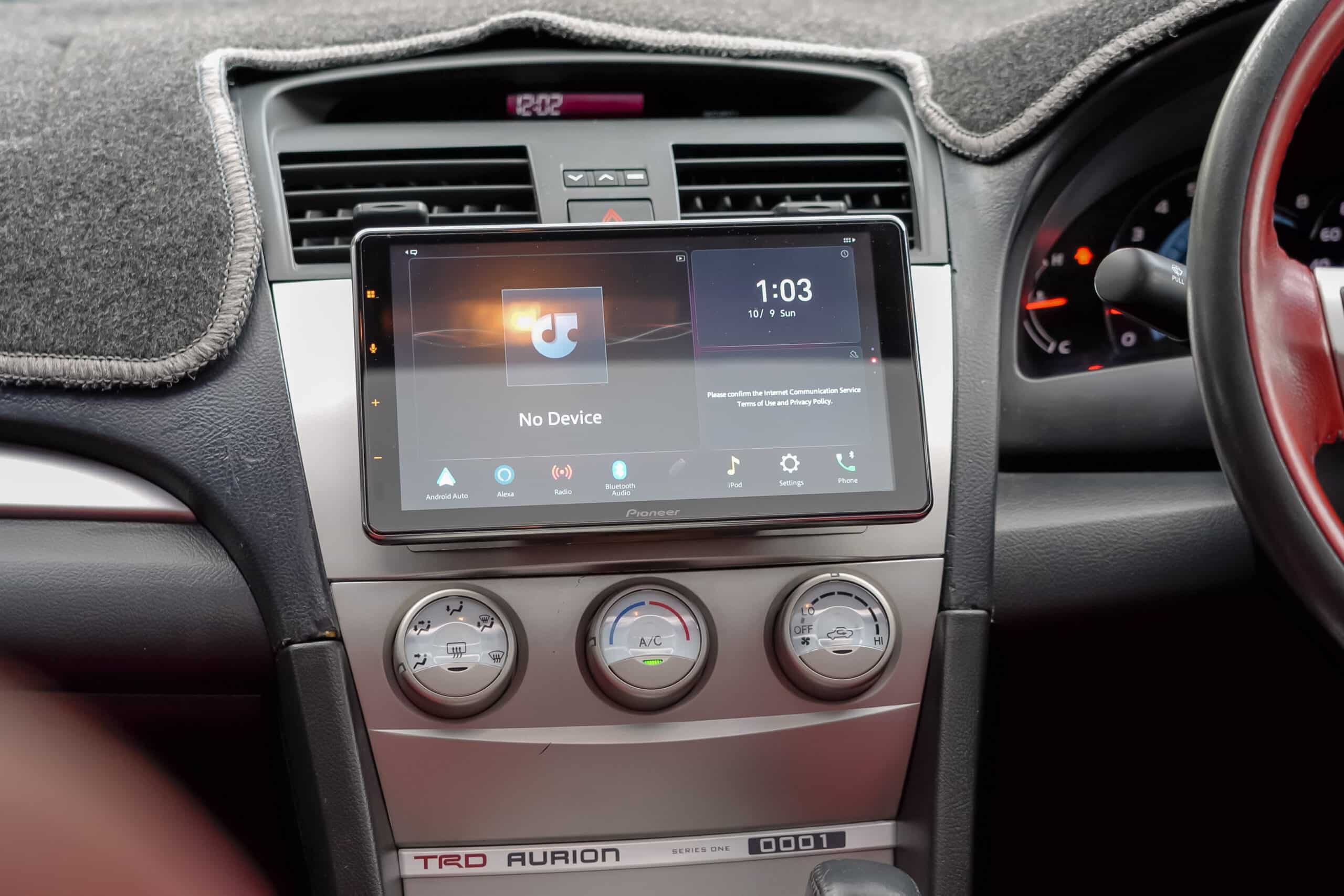
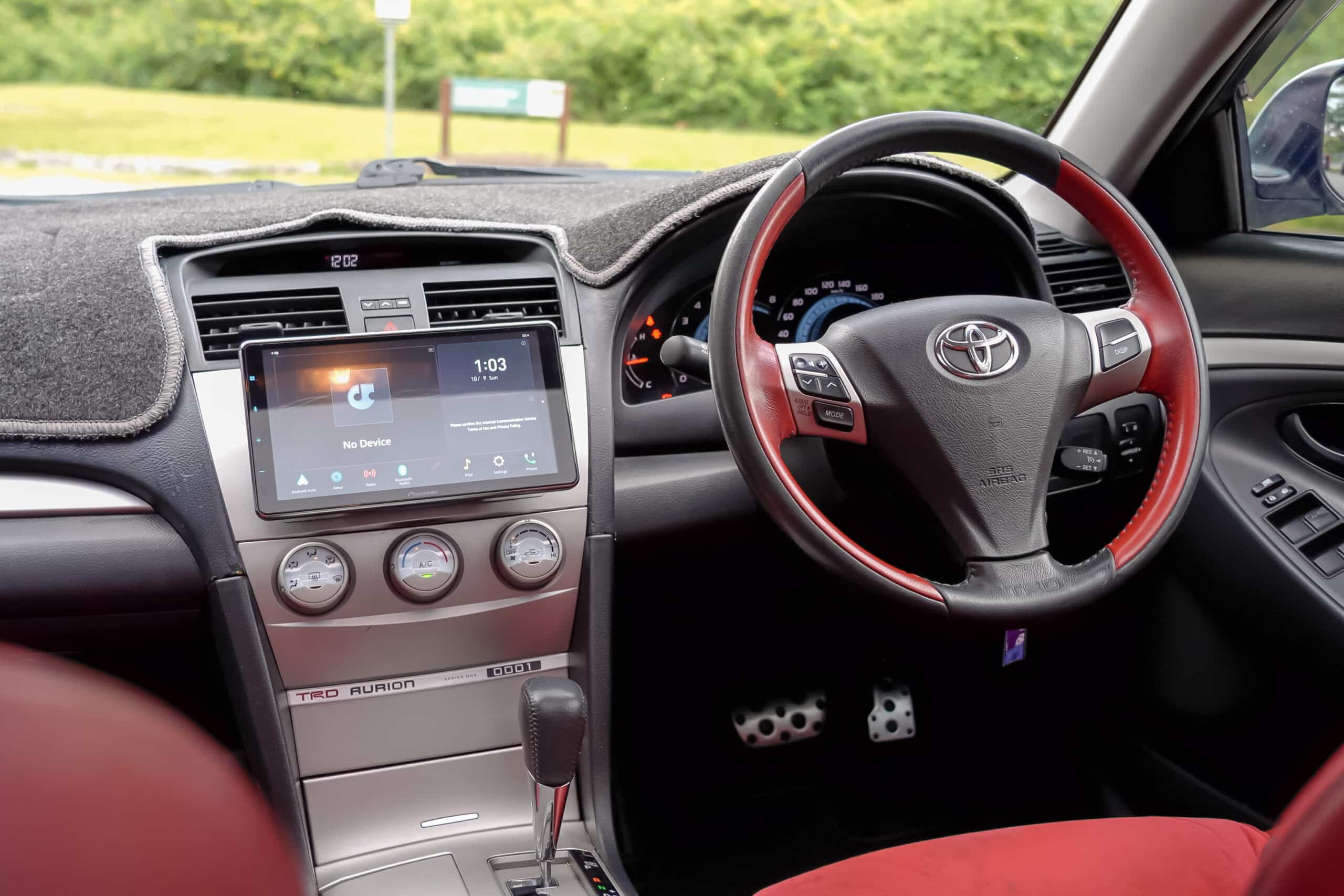
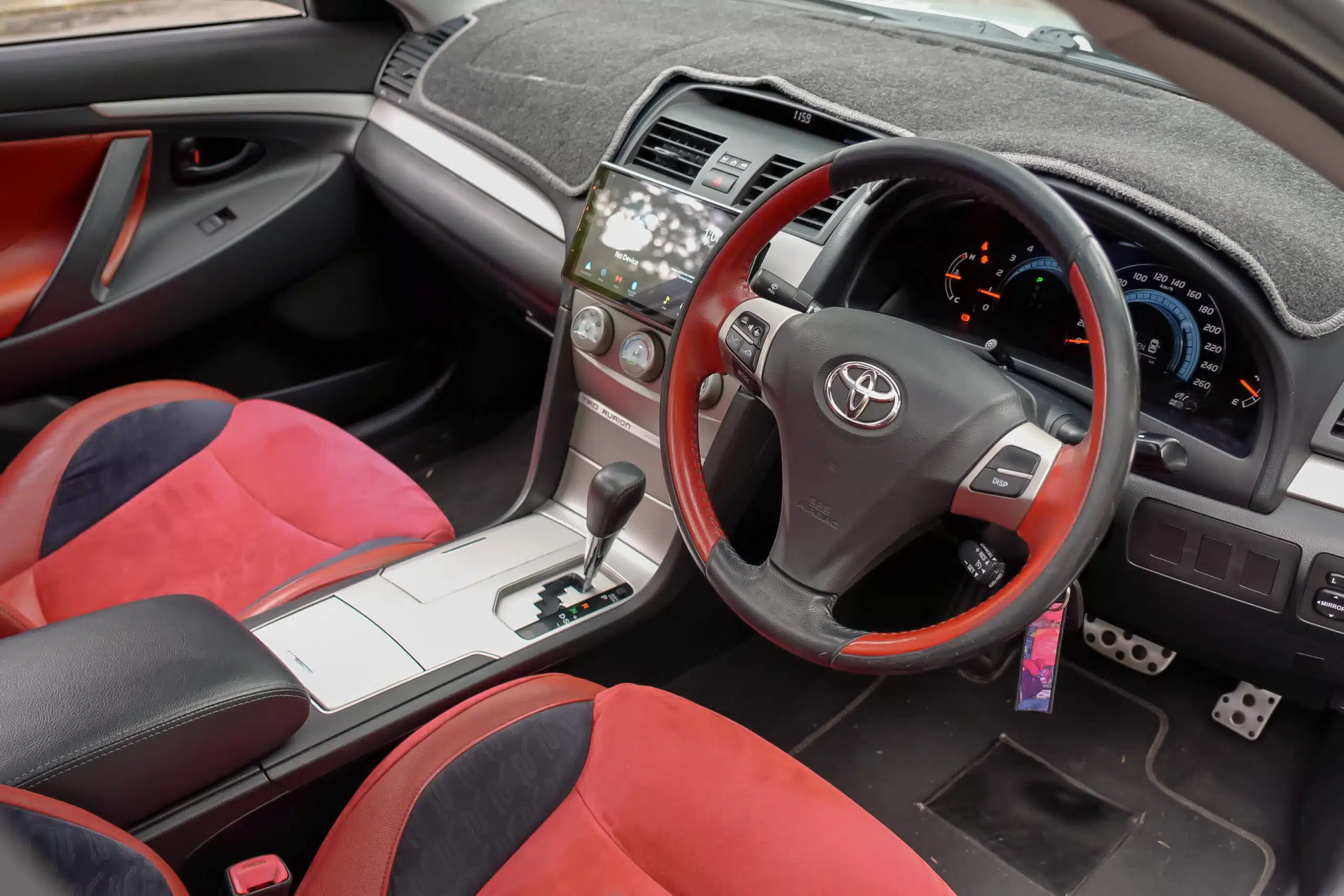
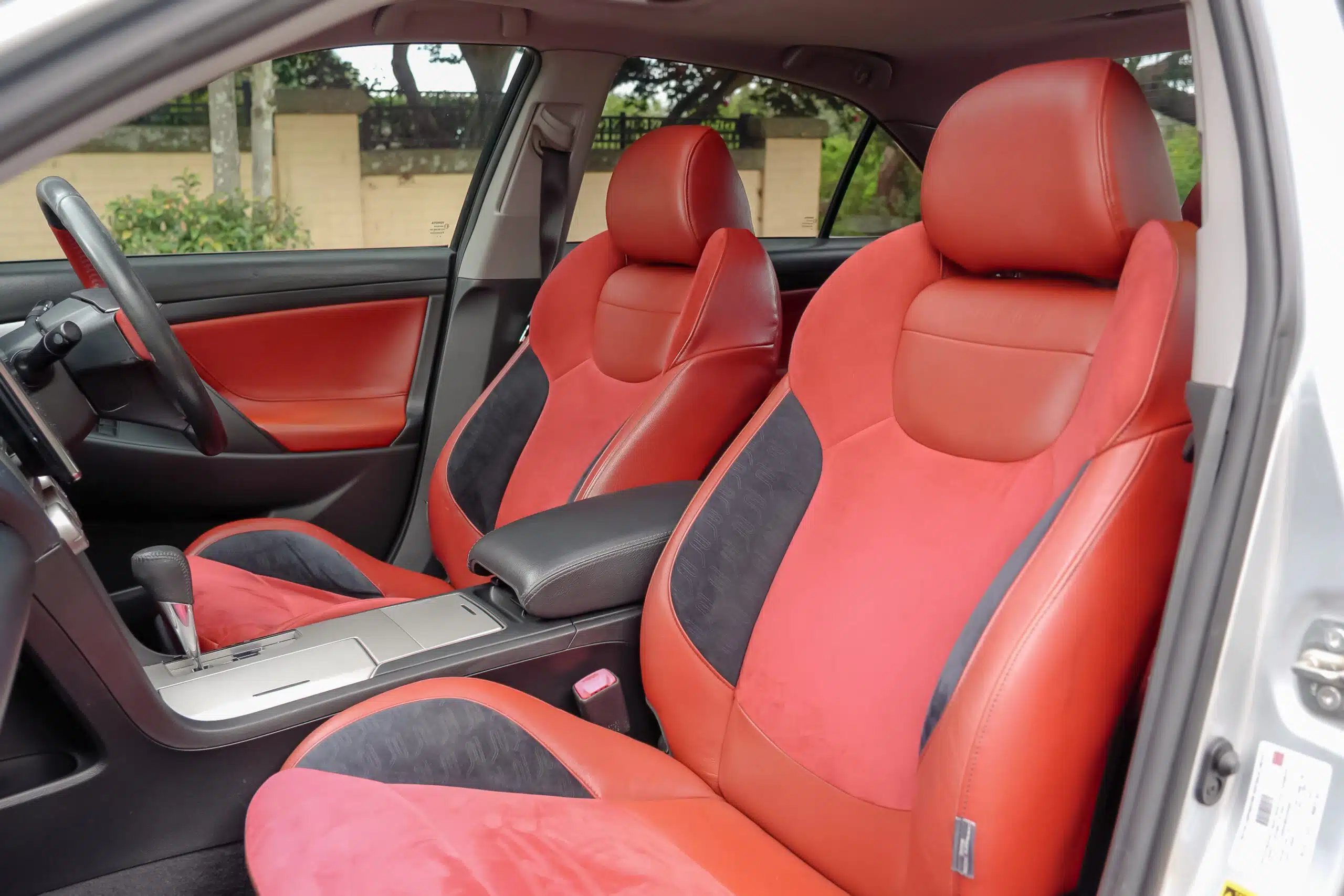
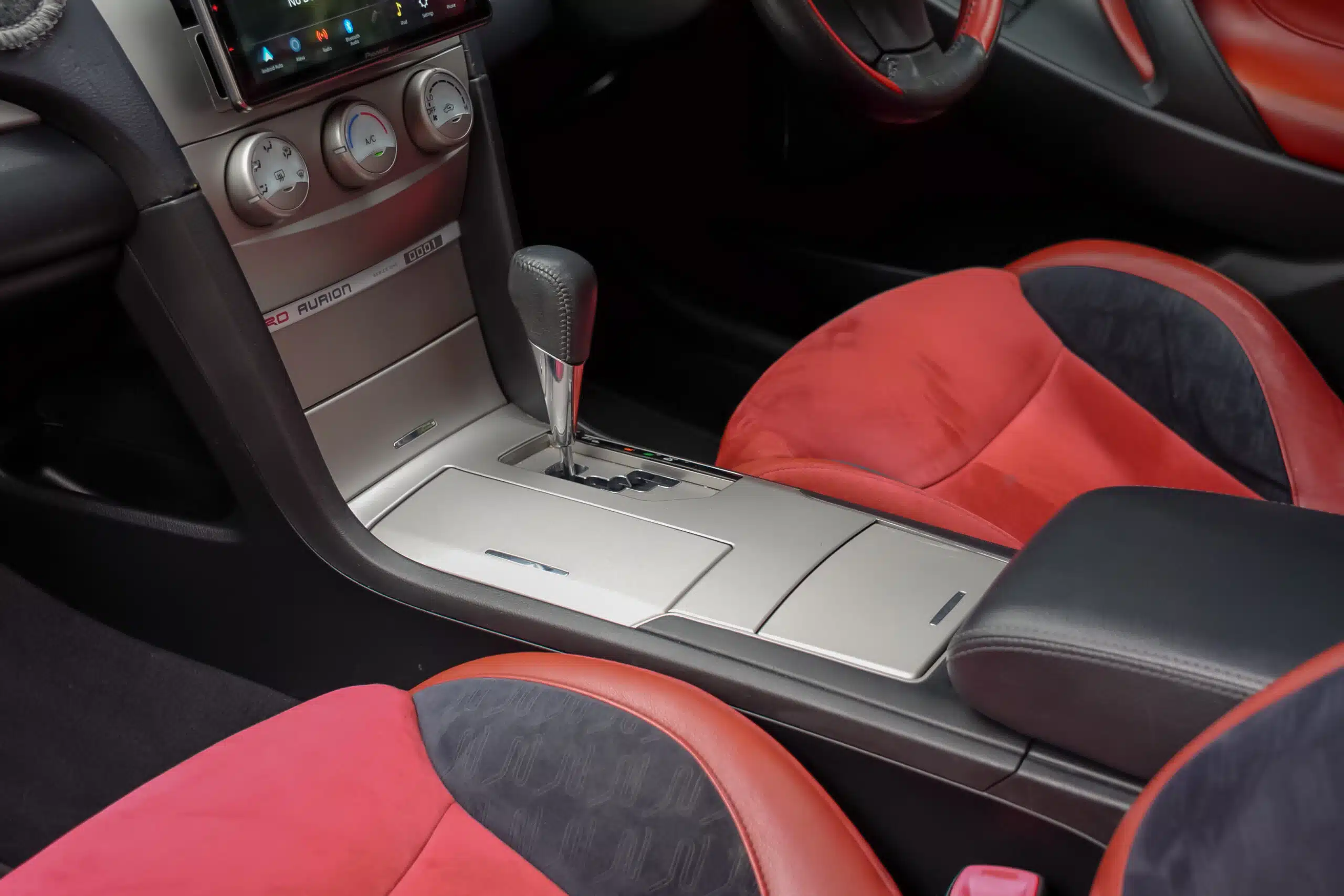
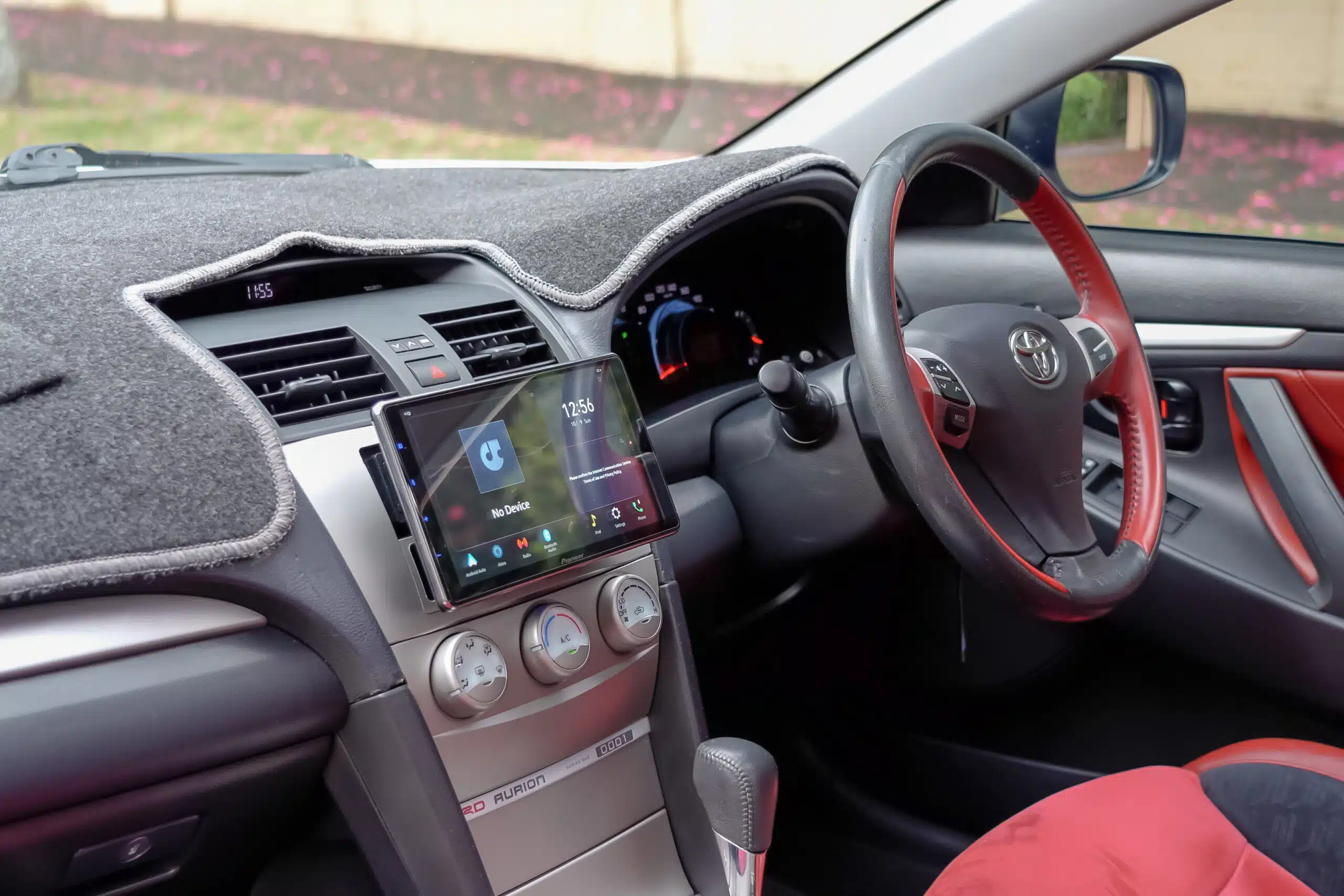



















Exterior:
Unlike plenty of cars of this period, paint fade shouldn’t be too bad as long as it has been garaged and polished during its life. Although, if you’re looking at some of the more vibrant colours, especially on the Sportivo models like the gold, blue or green, according to the owners these can be more susceptible to fading and especially on any of the plastic parts like the mirrors or rear spoiler.
While we’re on the rear spoiler, these have been the culprit for some water leakage issues into the boot, same can be said for the taillights, if you’re in the market, pop the boot and look underneath the spare wheel for any signs of rust. Light corrosion can be fixed but if it’s rotting away, don’t buy that car.
Speaking of water leaks, this one is often overlooked, but if the Aurion you’re looking at has a sunroof, make sure the drainage channels are clear and the drain hoses work.
Over time the hose can work its way loose and water can end up running through the sun visor and down the a-pillar. We couldn’t find any reports of this resulting in electronic issues which can be a common side effect with other cars suffering sunroof leakage issues, but the good news is fixing it just requires some cable ties. It’s is super easy and cheap to fix.
Also, sunroof rattles can be a thing too, but again, it’s pretty easy and cheap to fix, check the owners groups and forums for advice.
This next one isn’t a failure point, just a strong recommendation from owners, if the car you’re looking at has halogen low beam and park lights, change them to LEDs. It will make a world of difference, the standard headlights are terrible and will yellow over time.
As far as exterior electronic gremlins, hardly any have been reported. There are a handful of complaints about the parking sensors failing but everything else seems to be pretty bulletproof.
However, if you need to replace something on the exterior due to a minor accident, and especially if you’re looking at one of the TRD models, that’s when things can get interesting, because finding certain parts can be a hell of a challenge thanks to loads of components being discontinued.
Even on the Sportivo models, finding certain body kit parts in mint condition can be near impossible these days.
Interior:
Firstly the big one, dashboards going sticky and gross and looks like it’s melting and can become so sticky it can apparently catch insects and flies, yuck.
Now this should have been fixed under warranty by now, plus many dealerships have replaced dashboards even though cars have
Exterior:
Unlike plenty of cars of this period, paint fade shouldn’t be too bad as long as it has been garaged and polished during its life. Although, if you’re looking at some of the more vibrant colours, especially on the Sportivo models like the gold, blue or green, according to the owners these can be more susceptible to fading and especially on any of the plastic parts like the mirrors or rear spoiler.
While we’re on the rear spoiler, these have been the culprit for some water leakage issues into the boot, same can be said for the taillights, if you’re in the market, pop the boot and look underneath the spare wheel for any signs of rust. Light corrosion can be fixed but if it’s rotting away, don’t buy that car.
Speaking of water leaks, this one is often overlooked, but if the Aurion you’re looking at has a sunroof, make sure the drainage channels are clear and the drain hoses work.
Over time the hose can work its way loose and water can end up running through the sun visor and down the a-pillar. We couldn’t find any reports of this resulting in electronic issues which can be a common side effect with other cars suffering sunroof leakage issues, but the good news is fixing it just requires some cable ties. It’s is super easy and cheap to fix.
Also, sunroof rattles can be a thing too, but again, it’s pretty easy and cheap to fix, check the owners groups and forums for advice.
This next one isn’t a failure point, just a strong recommendation from owners, if the car you’re looking at has halogen low beam and park lights, change them to LEDs. It will make a world of difference, the standard headlights are terrible and will yellow over time.
As far as exterior electronic gremlins, hardly any have been reported. There are a handful of complaints about the parking sensors failing but everything else seems to be pretty bulletproof.
However, if you need to replace something on the exterior due to a minor accident, and especially if you’re looking at one of the TRD models, that’s when things can get interesting, because finding certain parts can be a hell of a challenge thanks to loads of components being discontinued.
Even on the Sportivo models, finding certain body kit parts in mint condition can be near impossible these days.
Interior:
Firstly the big one, dashboards going sticky and gross and looks like it’s melting and can become so sticky it can apparently catch insects and flies, yuck.
Now this should have been fixed under warranty by now, plus many dealerships have replaced dashboards even though cars have been out of warranty, other dealerships havnen’t been so cooperative.
This is such a common issue there are entire facebook groups dedicated to it, we highly recommend doing your homework on this issue, or you could throw a dash matt over it and pretend like there’s no issue at all. Also, there are “fixes” to this issue but the results can be mixed, again, do your homework.
The other issue is that some models seats lumbar controls can go bad, but it’s an easy DIY fix, check the owners groups and forums for advice and tutorials. Also on the seats, the Sportivo models fabric can tear a bit prematurely, although prematurely for one of these is like 150,000kms.
Aside from that, unlike plenty of European cars of this vintage, we struggled to find any reports of electrical issues, a handful of air conditioning faults popped up but they’re not what we’d call common at all. The interior trim seems to be incredibly resilient, about the only other complaint we found is something even current Toyotas can suffer from, the infotainment system sucks.
Understandably for a car this age, the standard head unit will lack any kind of modern phone connectivity, bluetooth was included from the 2009 update but it sucks. As does the rear view camera and the tiny screens they’re displayed through.
There’s a decent chance used example will have had the standard system replaced, but even then, many of the replacement headunits are getting long in the tooth and often owners haven’t bothered with a new rear view camera.
Same can be said for the speakers too, owners did mention that simply adding a new headunit does improve the sound quality but swap the speakers out, throw in some extra sound deadening especially if it’s an earlier lower spec car and the difference over the factory set up can be night and day.
Nothing ages a cars interior like an old screen, a new screen with a matching facia and the overall interior design can look a decade or two more modern.
Mechanically:
It’s important to mention, only 537 of these were ever made so reliability info can be difficult to find, as it realtes to the supercharged V6 in the TRD models.
Let’s break it down into two categories, the 2GR-FE engine, and the Eaton TVS900 supercharger.
Firstly the engine itself. The 6-cylinder 2GR is an engine that’s been around for years and statistically, it’s one of the most reliable V6 engines you can get. If you really want to nit-pick, some of the early versions has some issues with the rubber external oil lines to the VVT solenoids and also the oil cooler, but this was fixed on later versions.
The VVT oil control valves have a built-in screen filter, and that can block up with the engine has been neglected. But overall, they’re very reliable. Even when they’re neglected they’re still fairly reliable.
As for the supercharger, the TVS900 (Twin Vortices Series), is very similar to the unit used in after marker upgrades for the R53 Mini and Harrop kits for the Suzuki Jimny. Plus of course, the Lotus Evora and Exige use a similar set-up too.
It’s a super reliable unit, and it’s really not working hard on these, they only make about 8psi of boost. Importantly thouhg, you’ve just got to change the oil every 100,000km. It’s not like a turbo that uses engine oil pressure to lubricate it, it has its own oil (only about 200ml).
They can occasionally have some bypass valve and boost leak issues, although this is not common.
Another thing to keep in mind, these were a very low volume car so getting parts like hoses, brackets and intercooler hardware is going to be difficult. Some owners are even turning to the Lotus Evora and Exige parts bin for help.
Exterior:
Unlike plenty of cars of this period, paint fade shouldn’t be too bad as long as it has been garaged and polished during its life. Although, if you’re looking at some of the more vibrant colours, especially on the Sportivo models like the gold, blue or green, according to the owners these can be more susceptible to fading and especially on any of the plastic parts like the mirrors or rear spoiler.
While we’re on the rear spoiler, these have been the culprit for some water leakage issues into the boot, same can be said for the taillights, if you’re in the market, pop the boot and look underneath the spare wheel for any signs of rust. Light corrosion can be fixed but if it’s rotting away, don’t buy that car.
Speaking of water leaks, this one is often overlooked, but if the Aurion you’re looking at has a sunroof, make sure the drainage channels are clear and the drain hoses work.
Over time the hose can work its way loose and water can end up running through the sun visor and down the a-pillar. We couldn’t find any reports of this resulting in electronic issues which can be a common side effect with other cars suffering sunroof leakage issues, but the good news is fixing it just requires some cable ties. It’s is super easy and cheap to fix.
Also, sunroof rattles can be a thing too, but again, it’s pretty easy and cheap to fix, check the owners groups and forums for advice.
This next one isn’t a failure point, just a strong recommendation from owners, if the car you’re looking at has halogen low beam and park lights, change them to LEDs. It will make a world of difference, the standard headlights are terrible and will yellow over time.
As far as exterior electronic gremlins, hardly any have been reported. There are a handful of complaints about the parking sensors failing but everything else seems to be pretty bulletproof.
However, if you need to replace something on the exterior due to a minor accident, and especially if you’re looking at one of the TRD models, that’s when things can get interesting, because finding certain parts can be a hell of a challenge thanks to loads of components being discontinued.
Even on the Sportivo models, finding certain body kit parts in mint condition can be near impossible these days.
Interior:
Firstly the big one, dashboards going sticky and gross and looks like it’s melting and can become so sticky it can apparently catch insects and flies, yuck.
Now this should have been fixed under warranty by now, plus many dealerships have replaced dashboards even though cars have been out of warranty, other dealerships havnen’t been so cooperative.
This is such a common issue there are entire facebook groups dedicated to it, we highly recommend doing your homework on this issue, or you could throw a dash matt over it and pretend like there’s no issue at all. Also, there are “fixes” to this issue but the results can be mixed, again, do your homework.
The other issue is that some models seats lumbar controls can go bad, but it’s an easy DIY fix, check the owners groups and forums for advice and tutorials. Also on the seats, the Sportivo models fabric can tear a bit prematurely, although prematurely for one of these is like 150,000kms.
Aside from that, unlike plenty of European cars of this vintage, we struggled to find any reports of electrical issues, a handful of air conditioning faults popped up but they’re not what we’d call common at all. The interior trim seems to be incredibly resilient, about the only other complaint we found is something even current Toyotas can suffer from, the infotainment system sucks.
Understandably for a car this age, the standard head unit will lack any kind of modern phone connectivity, bluetooth was included from the 2009 update but it sucks. As does the rear view camera and the tiny screens they’re displayed through.
There’s a decent chance used example will have had the standard system replaced, but even then, many of the replacement headunits are getting long in the tooth and often owners haven’t bothered with a new rear view camera.
Same can be said for the speakers too, owners did mention that simply adding a new headunit does improve the sound quality but swap the speakers out, throw in some extra sound deadening especially if it’s an earlier lower spec car and the difference over the factory set up can be night and day.
Nothing ages a cars interior like an old screen, a new screen with a matching facia and the overall interior design can look a decade or two more modern.
Mechanically:
It’s important to mention, only 537 of these were ever made so reliability info can be difficult to find, as it realtes to the supercharged V6 in the TRD models.
Let’s break it down into two categories, the 2GR-FE engine, and the Eaton TVS900 supercharger.
Firstly the engine itself. The 6-cylinder 2GR is an engine that’s been around for years and statistically, it’s one of the most reliable V6 engines you can get. If you really want to nit-pick, some of the early versions has some issues with the rubber external oil lines to the VVT solenoids and also the oil cooler, but this was fixed on later versions.
The VVT oil control valves have a built-in screen filter, and that can block up with the engine has been neglected. But overall, they’re very reliable. Even when they’re neglected they’re still fairly reliable.
As for the supercharger, the TVS900 (Twin Vortices Series), is very similar to the unit used in after marker upgrades for the R53 Mini and Harrop kits for the Suzuki Jimny. Plus of course, the Lotus Evora and Exige use a similar set-up too.
It’s a super reliable unit, and it’s really not working hard on these, they only make about 8psi of boost. Importantly thouhg, you’ve just got to change the oil every 100,000km. It’s not like a turbo that uses engine oil pressure to lubricate it, it has its own oil (only about 200ml).
They can occasionally have some bypass valve and boost leak issues, although this is not common.
Another thing to keep in mind, these were a very low volume car so getting parts like hoses, brackets and intercooler hardware is going to be difficult. Some owners are even turning to the Lotus Evora and Exige parts bin for help.
So you might be thinking that after all that we’re going to recommend you buy a TRD Aurion or at the very least a standard Aurion, right? Well, actually no. Sort of.
The issue with the Aurion having this reputation for incredible reliability is that plenty on the used market have been used and abused because people think they’re invincible.
Plus with how affordable early and lower spec models have become, some owners have cut plenty of financial corners and as tough as an Aurion can be, with complete neglect, eventually things will start to go wrong.
Combine this with parts that can be hard to find and it makes you question just how sensible an Aurion purchase is.
If it lacks a comprehensive service history or has clearly had a tough life, don’t buy that car.
But on the flip side, find a cared for Aurion, make sure it passes a pre-purchase inspection with flying colours and for the money, there are very few other cars that can match it.
Seriously, $10,000 can get you into an Aurion that has full leather, loads of kit, it’ll drive beautifully and if it has been well maintained, it could outlast humanity.
But what about a TRD, should you buy one of these? If you can even find one for sale, abso-bloody-lutly.
The market hasn’t caught on yet but give it time, this thing surely has to be a future classic. If you need a family car with a huge dollop of
So you might be thinking that after all that we’re going to recommend you buy a TRD Aurion or at the very least a standard Aurion, right? Well, actually no. Sort of.
The issue with the Aurion having this reputation for incredible reliability is that plenty on the used market have been used and abused because people think they’re invincible.
Plus with how affordable early and lower spec models have become, some owners have cut plenty of financial corners and as tough as an Aurion can be, with complete neglect, eventually things will start to go wrong.
Combine this with parts that can be hard to find and it makes you question just how sensible an Aurion purchase is.
If it lacks a comprehensive service history or has clearly had a tough life, don’t buy that car.
But on the flip side, find a cared for Aurion, make sure it passes a pre-purchase inspection with flying colours and for the money, there are very few other cars that can match it.
Seriously, $10,000 can get you into an Aurion that has full leather, loads of kit, it’ll drive beautifully and if it has been well maintained, it could outlast humanity.
But what about a TRD, should you buy one of these? If you can even find one for sale, abso-bloody-lutly.
The market hasn’t caught on yet but give it time, this thing surely has to be a future classic. If you need a family car with a huge dollop of spice, this is the car for you.
So you might be thinking that after all that we’re going to recommend you buy a TRD Aurion or at the very least a standard Aurion, right? Well, actually no. Sort of.
The issue with the Aurion having this reputation for incredible reliability is that plenty on the used market have been used and abused because people think they’re invincible.
Plus with how affordable early and lower spec models have become, some owners have cut plenty of financial corners and as tough as an Aurion can be, with complete neglect, eventually things will start to go wrong.
Combine this with parts that can be hard to find and it makes you question just how sensible an Aurion purchase is.
If it lacks a comprehensive service history or has clearly had a tough life, don’t buy that car.
But on the flip side, find a cared for Aurion, make sure it passes a pre-purchase inspection with flying colours and for the money, there are very few other cars that can match it.
Seriously, $10,000 can get you into an Aurion that has full leather, loads of kit, it’ll drive beautifully and if it has been well maintained, it could outlast humanity.
But what about a TRD, should you buy one of these? If you can even find one for sale, abso-bloody-lutly.
The market hasn’t caught on yet but give it time, this thing surely has to be a future classic. If you need a family car with a huge dollop of spice, this is the car for you.
Have ultimate peace of mind when buying a used car by purchasing an official PPSR report.
Please note that pricing information is subject to fluctuations in the automotive market.
Information correct as of July 11, 2025.
The advice provided on this website is general advice only. It has been prepared without taking into account your objectives, financial situation or needs. Before acting on this advice, you should consider the appropriateness of the advice, having regard to your own objectives, financial situation and needs.
Read our full terms and conditions here.
You are the best, the content in your videos is so helpful, delivered in a great way. Please keep going as for sure you are unique in every way. All the best from Guatemala
L. G. - YouTube
You guys have truly found something wonderful… Loved this channel ever since from the beginning… Will support you guys as long as you guys keep making these wonderful car reviews…
Calvin - YouTube
This is probably the best channel I have ever seen when reviewing vehicles. New or old. The honesty is so appreciated. I’ve been a mechanic for 20 years and I find it very informative when looking for a vehicle for my daughter. Keep up the awesome work.
Jason T. - YouTube
© 2025 ReDriven All Rights Reserved